Forums
- Forums
- Axis And Allies Forum
- General Discussion
- Aviation News
Aviation News
Post a reply
- Go to Next topic
- Go to Welcome
- Go to Introduce Yourself
- Go to General Discussion
- Go to Screenshots, Images and Videos
- Go to Off topic
- Go to Works in Progress
- Go to Skinning Tips / Tutorials
- Go to Skin Requests
- Go to IJAAF Library
- Go to Luftwaffe Library
- Go to RAF Library
- Go to USAAF / USN Library
- Go to Misc Library
- Go to The Ops Room
- Go to Made in Germany
- Go to Campaigns and Missions
- Go to Works in Progress
- Go to Juri's Air-Raid Shelter
- Go to Campaigns and Missions
- Go to Works in Progress
- Go to Skinpacks
- Go to External Projects Discussion
- Go to Books & Resources
-
 Main AdminSOUTH CHINA SEA (March 6, 2024) An F/A-18E Super Hornet, assigned to the “Blue Blasters” of Strike Fighter Squadron (VFA) 34, prepares to land on the deck of the Nimitz-class aircraft carrier USS Theodore Roosevelt (CVN 71), March 6, 2024. Theodore Roosevelt, flagship of Carrier Strike Group Nine, is underway conducting routine operations in the U.S. 7th Fleet area of operations. U.S. 7th Fleet is the U.S. Navy’s largest forward-deployed numbered fleet, and routinely interacts and operates with allies and partners in preserving a free and open Indo-Pacific region. (U.S. Navy photo by Mass Communication Specialist Seaman Apprentice Aaron Haro Gonzalez)
Main AdminSOUTH CHINA SEA (March 6, 2024) An F/A-18E Super Hornet, assigned to the “Blue Blasters” of Strike Fighter Squadron (VFA) 34, prepares to land on the deck of the Nimitz-class aircraft carrier USS Theodore Roosevelt (CVN 71), March 6, 2024. Theodore Roosevelt, flagship of Carrier Strike Group Nine, is underway conducting routine operations in the U.S. 7th Fleet area of operations. U.S. 7th Fleet is the U.S. Navy’s largest forward-deployed numbered fleet, and routinely interacts and operates with allies and partners in preserving a free and open Indo-Pacific region. (U.S. Navy photo by Mass Communication Specialist Seaman Apprentice Aaron Haro Gonzalez)_34_prepares_to_land_on_the_deck_of_the_Nimitz-class_aircraft_carrier_USS_Theodore_Roosevelt.jpg?width=1920&height=1080&fit=bounds)
SOUTH CHINA SEA (March 7, 2024) An F/A-18F Super Hornet, assigned to the “Black Knights” of Strike Fighter Squadron (VFA) 154, lands on the flight deck aboard the Nimitz-class aircraft carrier USS Theodore Roosevelt (CVN 71), March 7, 2024. Theodore Roosevelt, flagship of Carrier Strike Group Nine, is underway conducting routine operations in the U.S. 7th Fleet area of operations. U.S. 7th Fleet is the U.S. Navy’s largest forward-deployed numbered fleet, and routinely interacts and operates with allies and partners in preserving a free and open Indo-Pacific region. (U.S. Navy photo by Mass Communication Specialist 2nd Class Krescent Peters)_154_lands_on_the_flight_deck_aboard_the_Nimitz-class_aircraft_carrier_USS_Theodore_Roosevelt.jpg?width=1920&height=1080&fit=bounds)
Japan Ground Self Defense Force CH-47JA Chinook pilots with Landing Division 1, egress during flight operations with the amphibious dock landing ship USS Green Bay (LPD 20), during Iron Fist 24, in the Philippine Sea, Mar. 9, 2024. An effective preventative measure for mishaps is training, ensuring our service members are prepared to operate under any circumstances and in any operating environment. Iron Fist is an annual bilateral exercise designed to increase interoperability and strengthen the relationships between the U.S. Marine Corps, the U.S. Navy, the Japanese Ground Self Defense Force, and the Japanese Maritime Self-Defense Force. (U.S. Marine Corps photo by Cpl. Christopher Lape)_during_Iron_Fist_24_in_the_Philippine_Sea_Mar._9_2024.jpg?width=1920&height=1080&fit=bounds)
A U.S. Air Force KC-135 Stratotanker, from the 168th Wing, Alaska Air National Guard, conducts air refueling with a U.S. Marine Corps F/A-18 Hornet from the 2nd Marine Aircraft Wing during exercise Nordic Response 24 in tactical air space over Sweden, March 6, 2024. Exercises like NR24 are a tangible representation of U.S. commitment to our European Allies and partners. (U.S. Air Force photo by Tech. Sgt. Steven Adkins)
A Norwegian F-35 Lightning II disengages after receiving fuel from a KC-135 Stratotanker assigned to the 101st Air Refueling Wing, during Nordic Response 24, March 6, 2024. The MAINEiacs are staged at RAF Mildenhall, England, to participate in the Norwegian-led exercise taking place in Norway, Sweden and Finland. NR24 promotes peace and security through cooperation, collaboration, and interoperability under harsh arctic conditions.
(Photo by Master Sgt. Andrew Sinclair)
A Norwegian F-35 Lightning II lines up to receive fuel from a KC-135 Stratotanker assigned to the 101st Air Refueling Wing, during Nordic Response 24, March 6, 2024. The MAINEiacs are staged at RAF Mildenhall, England, to participate in the Norwegian-led exercise taking place in Norway, Sweden and Finland. NR24 promotes peace and security through cooperation, collaboration, and interoperability under harsh arctic conditions.
(Photo by Master Sgt. Andrew Sinclair)
-
1 year agoTue Mar 12 2024, 07:49pmDuggy
 Main AdminAirmen from the 178th Wing, 163rd Attack Wing and 248th Air Traffic Control Squadron back a remotely piloted MQ-9 Reaper into a hanger on Springfield-Beckley Air National Guard Base, Ohio, March 12, 2024. Exercise Advanced Wrath provides the 178th Wing with an opportunity to work with airmen from across the country. (U.S. Army National Guard photo by Staff Sgt. Thomas Moeger)
Main AdminAirmen from the 178th Wing, 163rd Attack Wing and 248th Air Traffic Control Squadron back a remotely piloted MQ-9 Reaper into a hanger on Springfield-Beckley Air National Guard Base, Ohio, March 12, 2024. Exercise Advanced Wrath provides the 178th Wing with an opportunity to work with airmen from across the country. (U.S. Army National Guard photo by Staff Sgt. Thomas Moeger)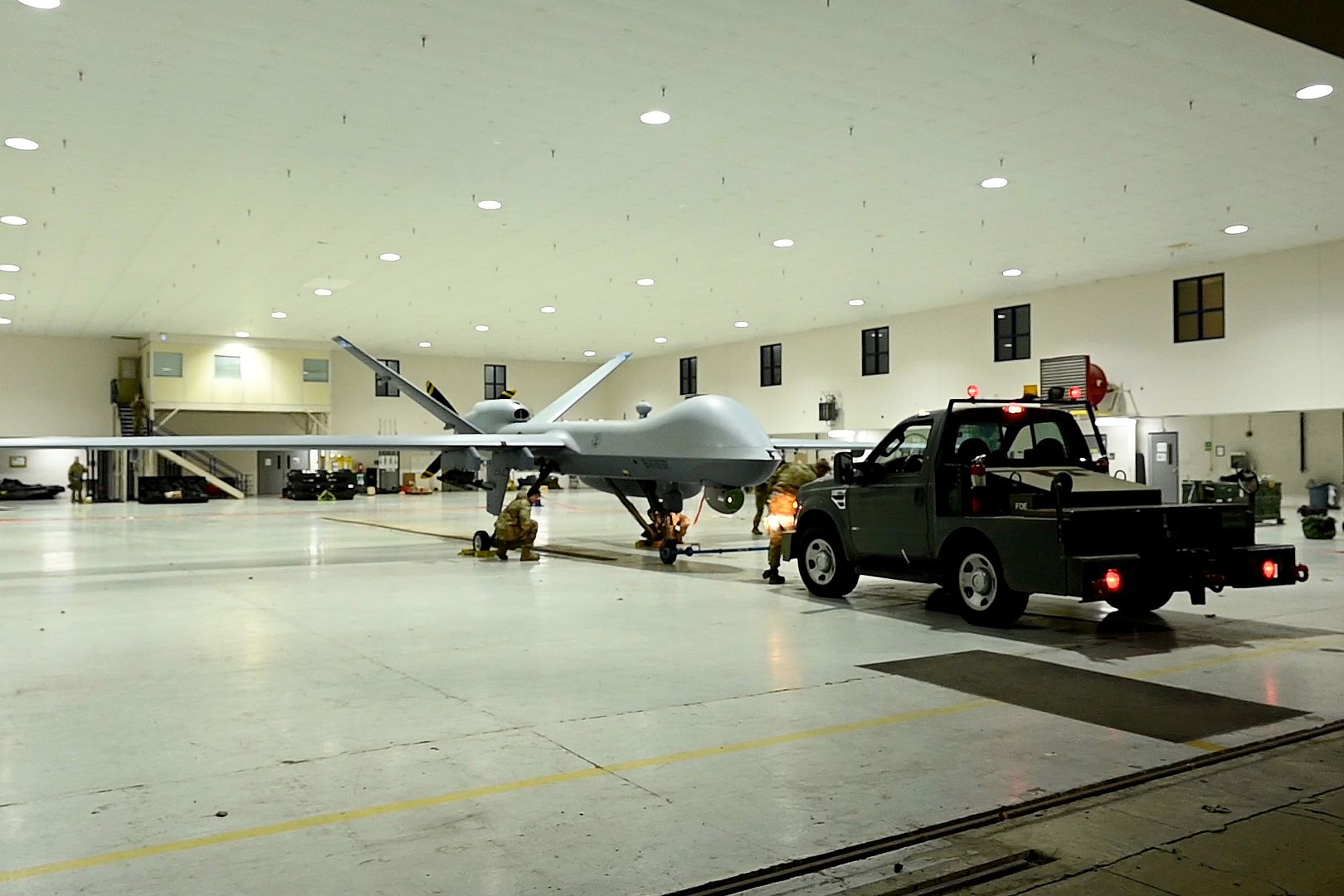
Two Royal Netherlands Air Force F-35A Lightning IIs conduct familiarization flights over a low-level training area for Red Flag-Nellis 24-2, March 7, 2024. The presence of the F-35s offers the U.S., Allies, and partners a versatile and highly capable system, enhancing collective defense measures while reinforcing the NATO Alliance’s commitment to leveraging top-tier military capabilities for regional security and deterrence. (U.S. Air Force photos by Senior Airman Megan Estrada)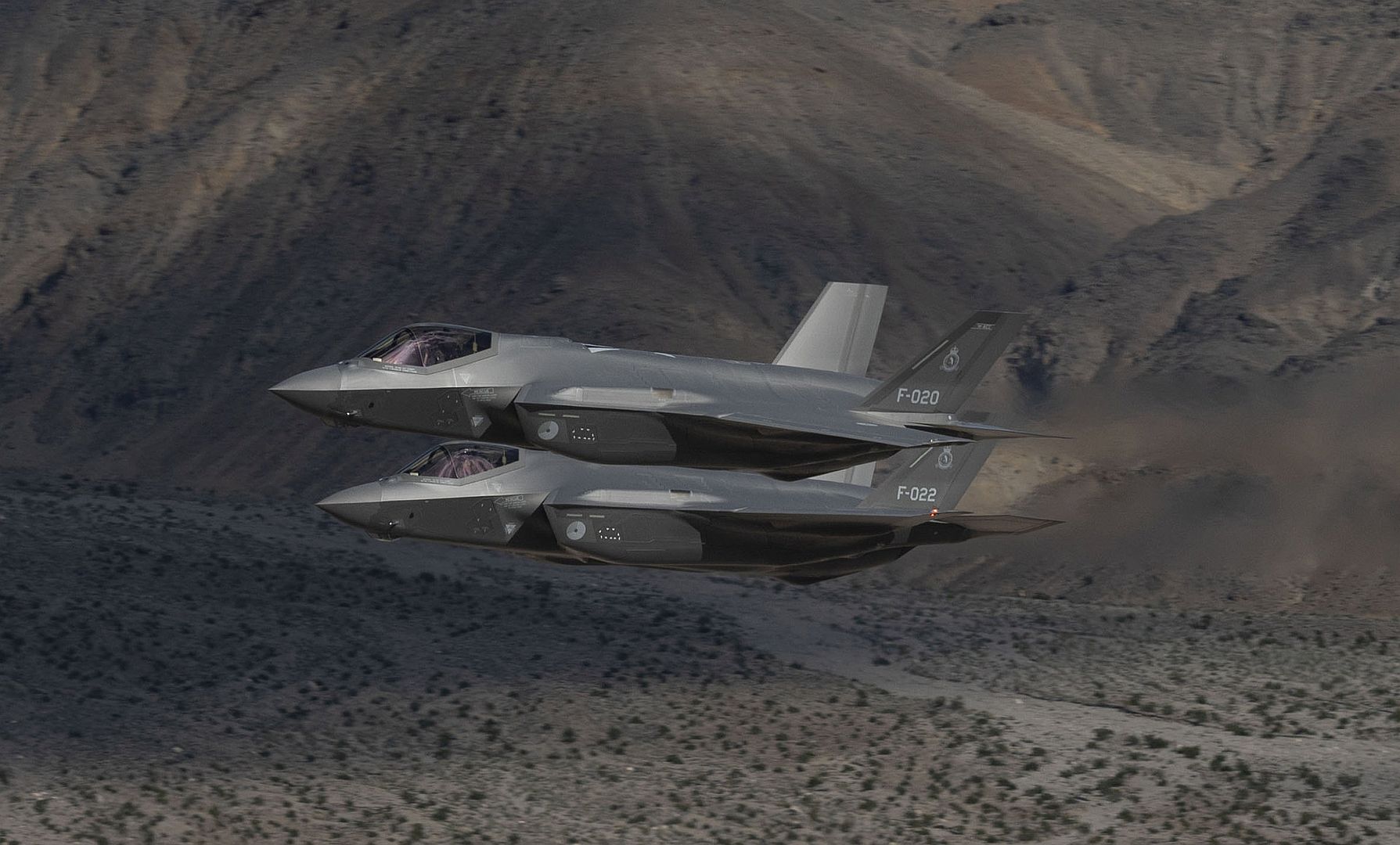
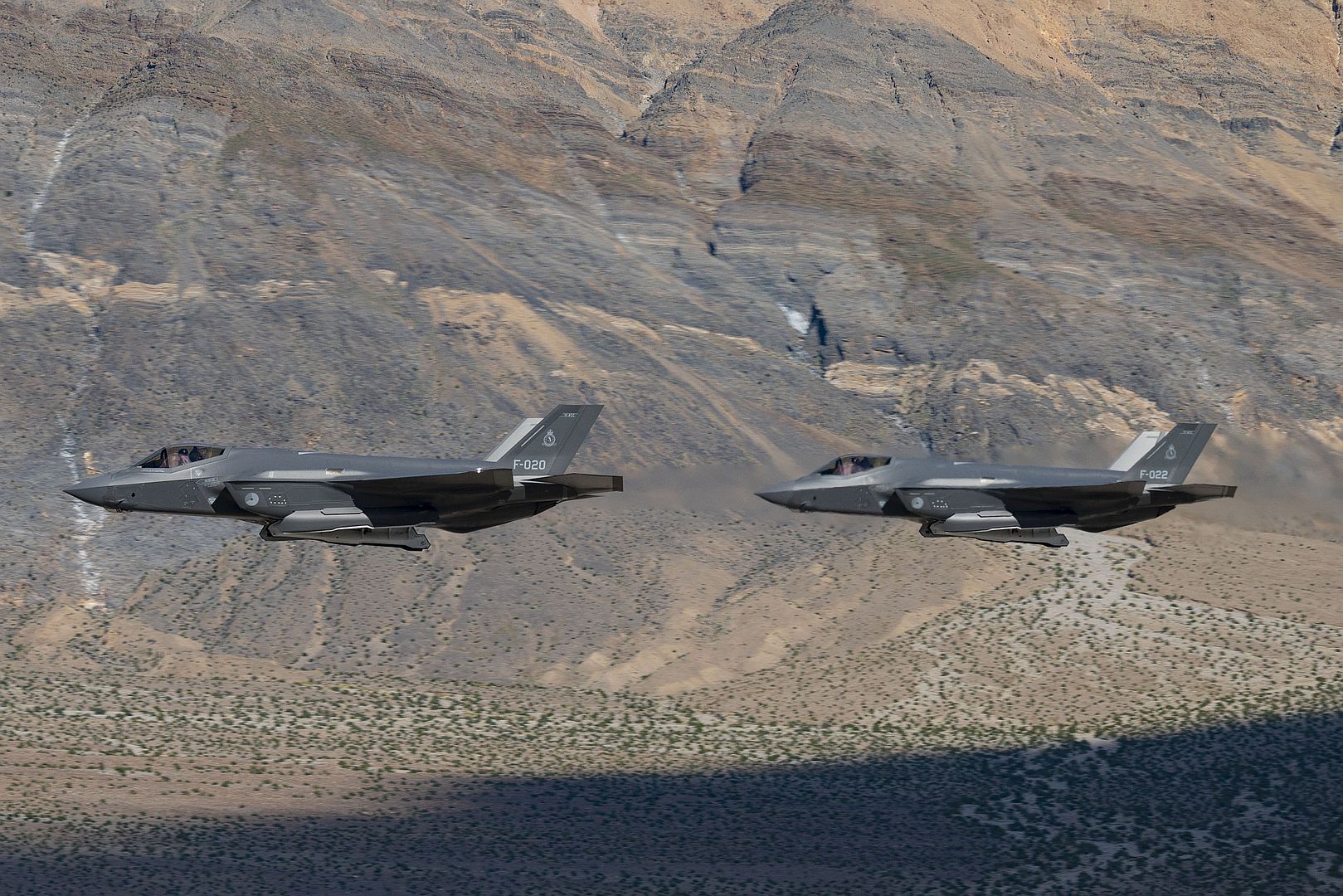
PRUDOHE BAY, Alaska (March 10, 2024) – Air crew from the Royal Canadian Air Force's 440 Squadron maintain an DHC CC-138 Twin Otter AC 805 during Operation Ice Camp (ICE CAMP) 2024. ICE CAMP is a three-week operation that allows the Navy to assess its operational readiness in the Arctic, increase experience in the region, advance understanding of the Arctic environment, and continue to develop relationships with other services, allies, and partner organizations. (U.S. Navy photo by Mass Communication Specialist 1st Class Scott Barnes/Released)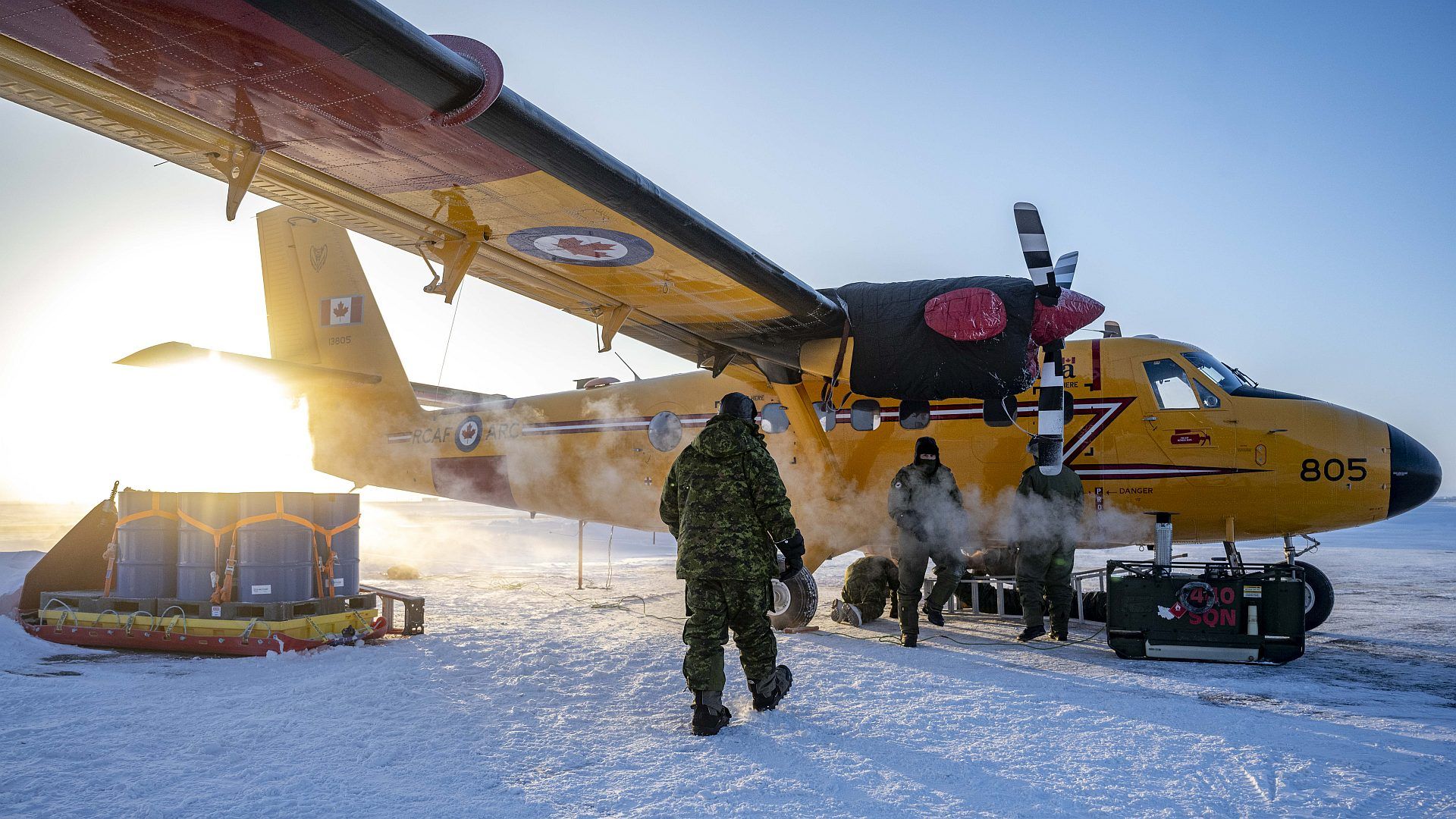
Singapore (March 12, 2024) - Bell Textron Inc., a Textron Inc. (NYSE:TXT) company, announced the delivery of a Bell 505 helicopter to Honda Airways in Japan.
Honda Airways, a subsidiary of Honda Motors, was established in 1964 by Souichiro Honda, legendary founder of Honda Motors. Today, Honda Airways offers scenic flights using light aircraft and helicopters, skydiving, corporate charters, flight training and provides helicopter emergency medical services to support disaster relief efforts when requested by local government agencies.
“The Bell 505 continues to see strong interest and demand from our Japanese customers on the back of its good operating performance and reliable track record,” said Takuya Masamura, country manager, Japan, Bell. “We are honored that Honda Airways, an established helicopter operator in Japan, has taken delivery of its first Bell 505 and we look forward to supporting Honda Airways in the operations of their Bell 505.”
Today, there are 12 Bell 505 helicopters operating across various segments in Japan with Honda Airways utilizing their Bell 505 for corporate charters and helicopter flight training.
The Bell 505 program has collectively achieved more than 100,000 flight hours with more than 500 Bell 505 helicopters delivered to customers globally. In February 2023, the Bell 505 became the world’s first single engine helicopter to fly on 100 percent sustainable aviation fuel.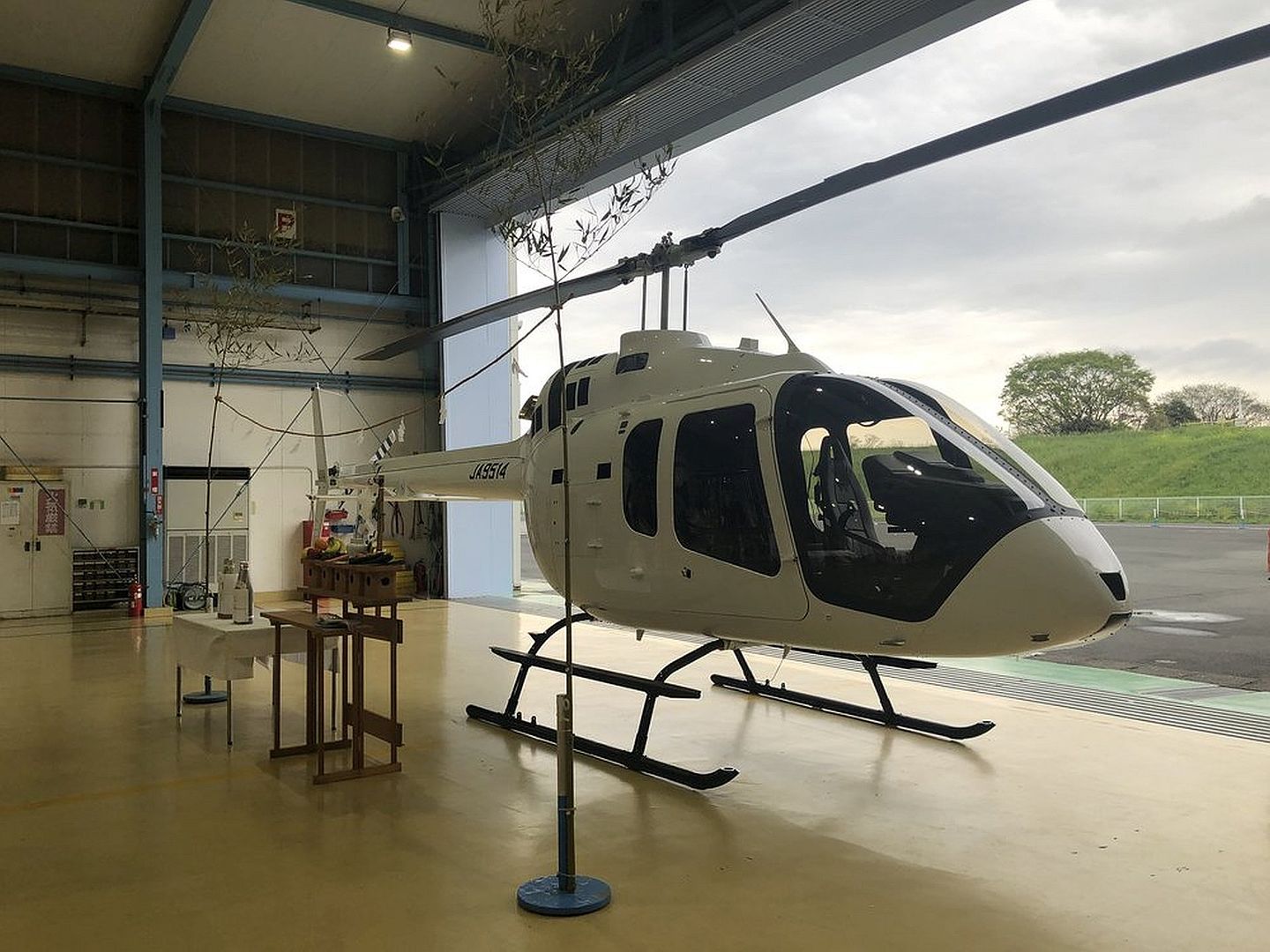
-
1 year agoWed Mar 13 2024, 07:50pmDuggy
 Main AdminNorwegian F-35 Lightning II's close the gap to receive fuel from a KC-135 Stratotanker assigned to the 101st Air Refueling Wing during Nordic Response 24, March 11, 2024. The MAINEiacs are staged at RAF Mildenhall, England, to take part in the Norwegian-led exercise taking place in Norway, Sweden and Finland. Exercises like NR24 solidify operational and tactical relationships; synchronizing tactics, techniques and procedures; and strengthen bonds among U.S., Norwegian and Allied and partner forces.
Main AdminNorwegian F-35 Lightning II's close the gap to receive fuel from a KC-135 Stratotanker assigned to the 101st Air Refueling Wing during Nordic Response 24, March 11, 2024. The MAINEiacs are staged at RAF Mildenhall, England, to take part in the Norwegian-led exercise taking place in Norway, Sweden and Finland. Exercises like NR24 solidify operational and tactical relationships; synchronizing tactics, techniques and procedures; and strengthen bonds among U.S., Norwegian and Allied and partner forces.
(Photos by Master Sgt. Andrew Sinclair)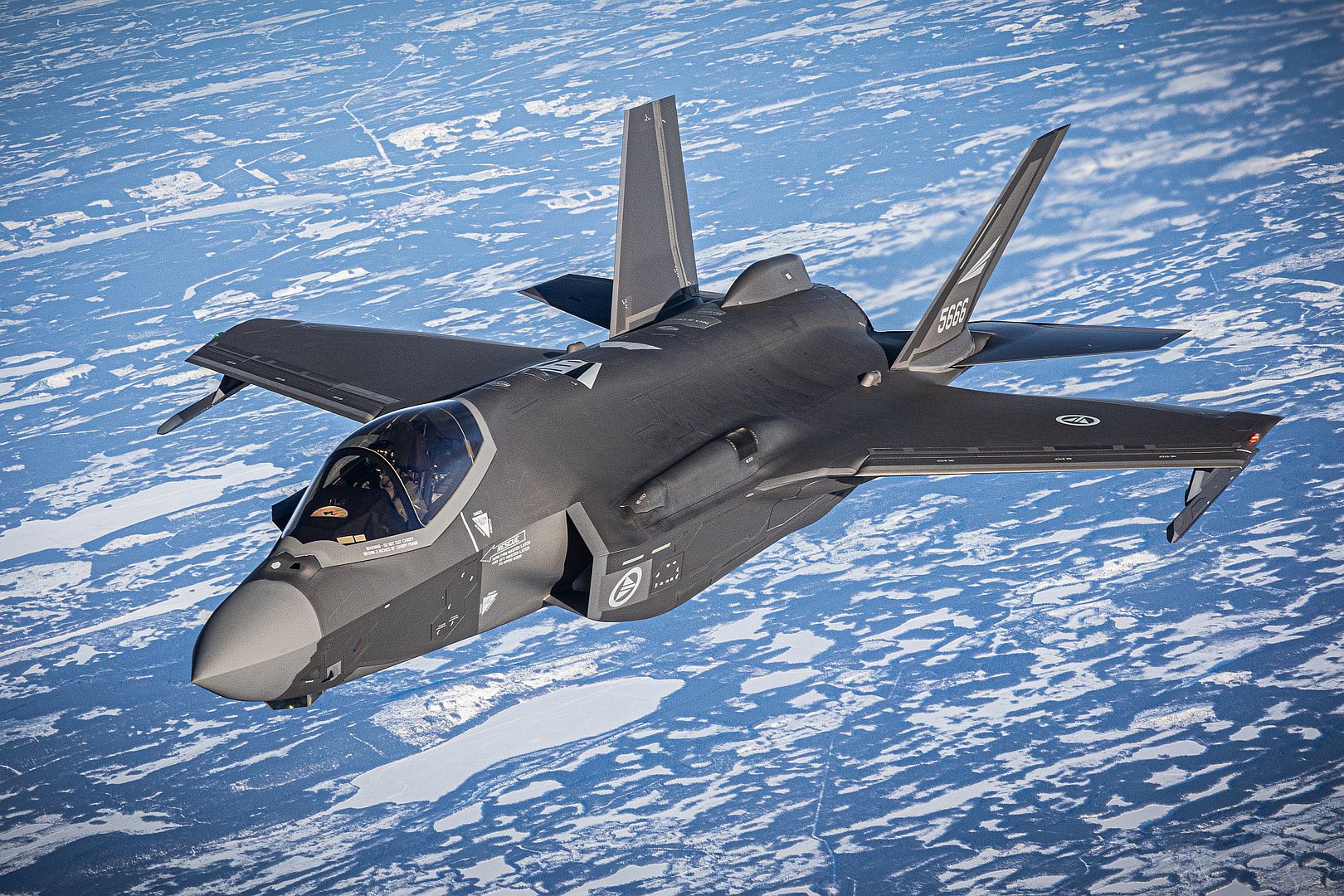
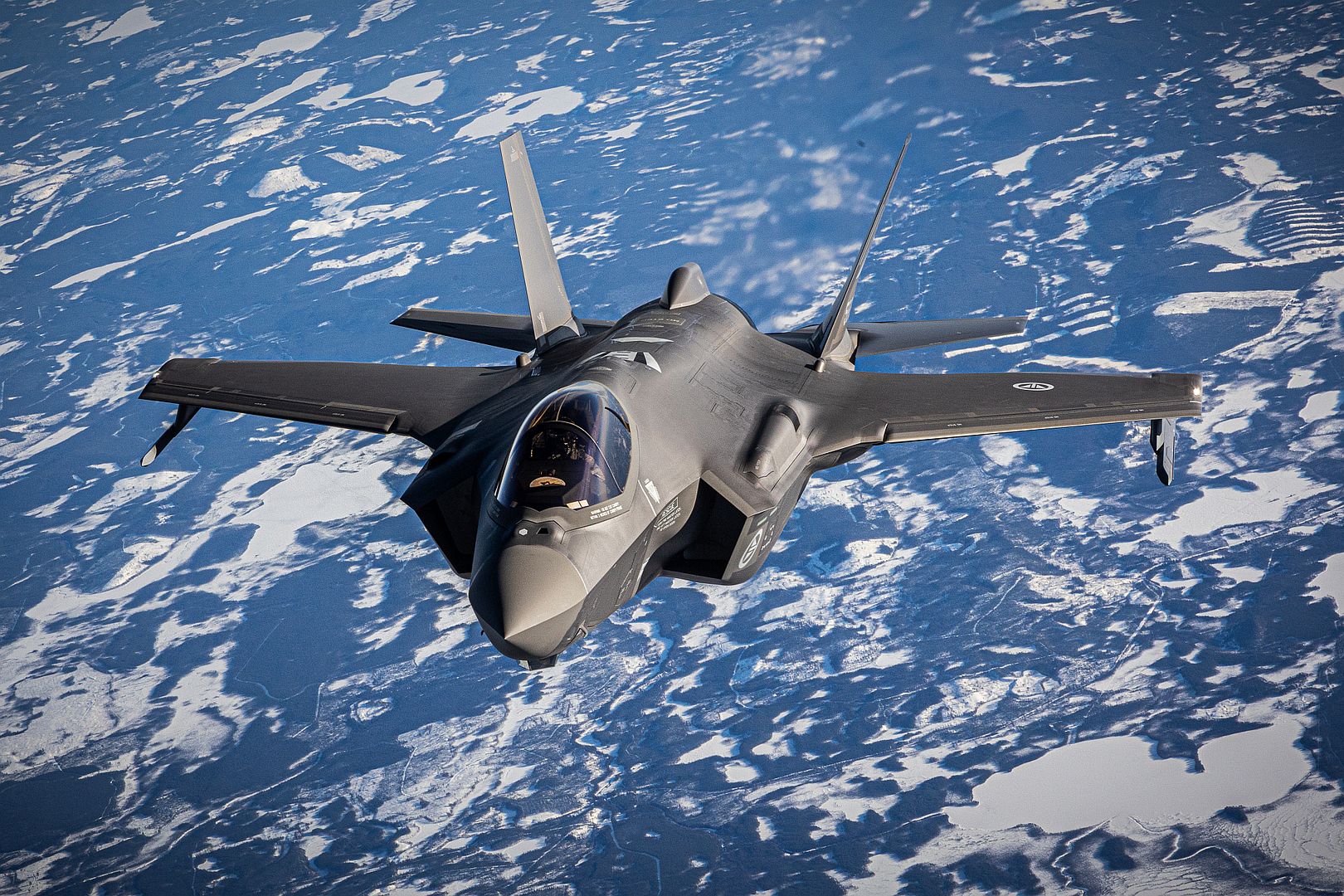
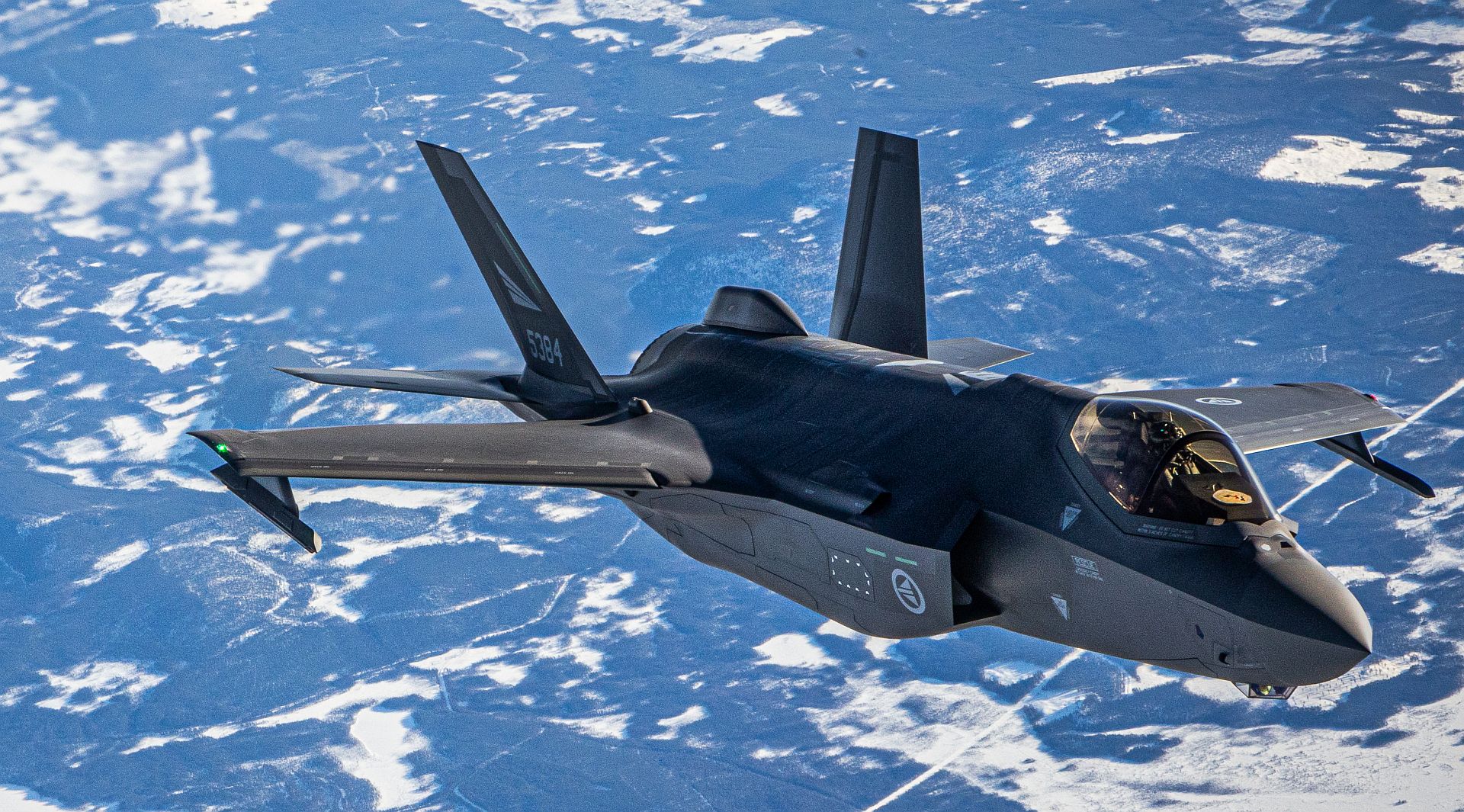
A KC-135 Stratotanker assigned to the 914th Air Refueling Wing parked at Luleå-Kallax Air Base, Sweden, during Nordic Response 24, March 12, 2024. U.S., Ally, and partner nation aircraft participate in the Norwegian-led exercise taking place in Norway, Sweden and Finland. NR24 promotes peace and security through cooperation, collaboration, and interoperability under harsh Arctic conditions. (U.S. Air Force photo by Staff Sgt. Jessica Avallone)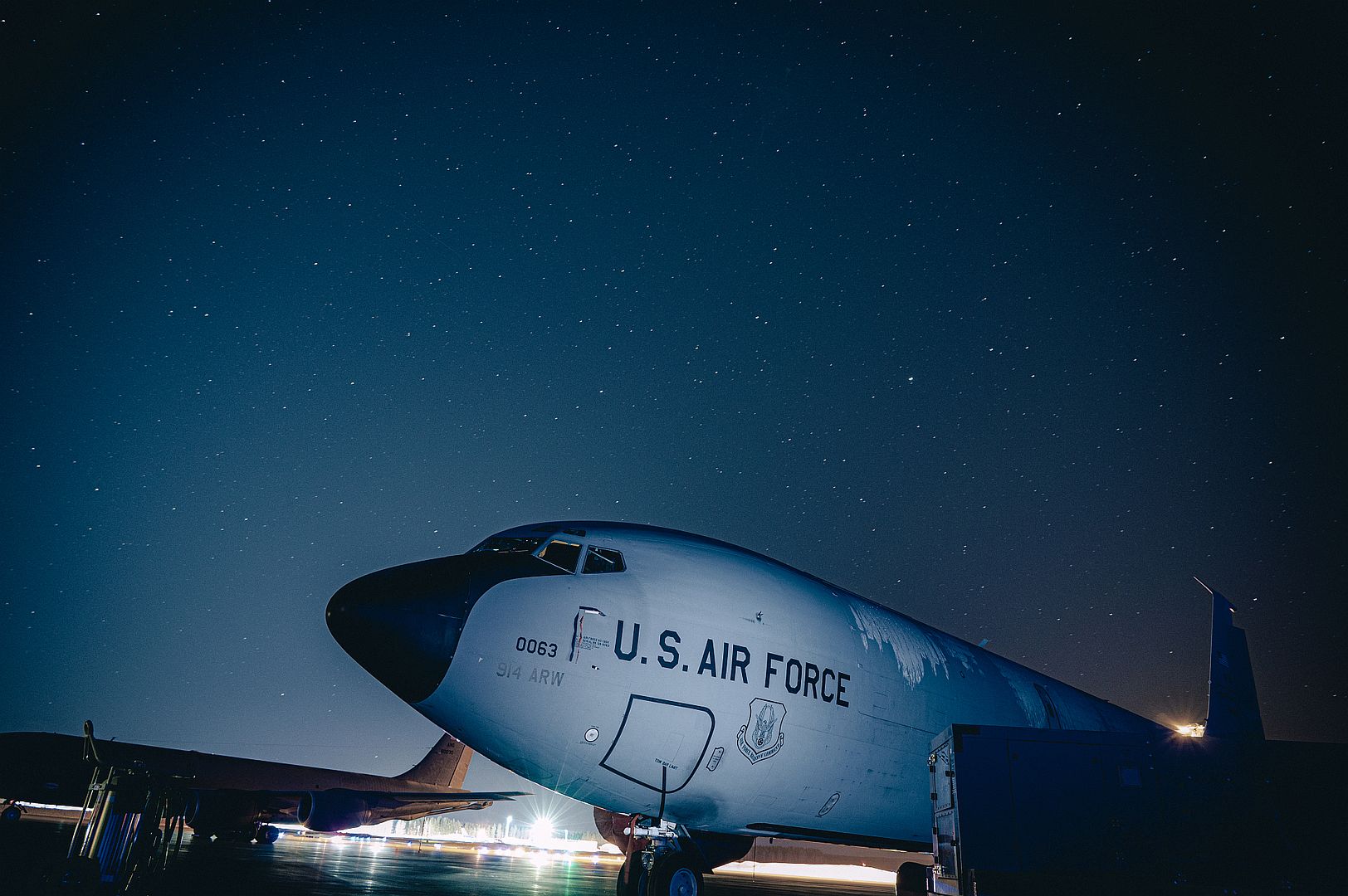
A U.S. Air Force C-17 Globemaster III assigned to Air Mobility Command takes off to provide humanitarian aid in Gaza from an undisclosed location within the U.S. Central Command area of responsibility, March 13, 2024. Joint Base Charleston deployed C-17s to further enhance airdrop efforts alongside C-130 variants deployed to U.S. Air Forces Central to deliver humanitarian aid into Gaza. The USAF rapid global mobility capability enabled the expedited movement of critical, life-saving supplies to Gaza. (U.S. Air Force photo)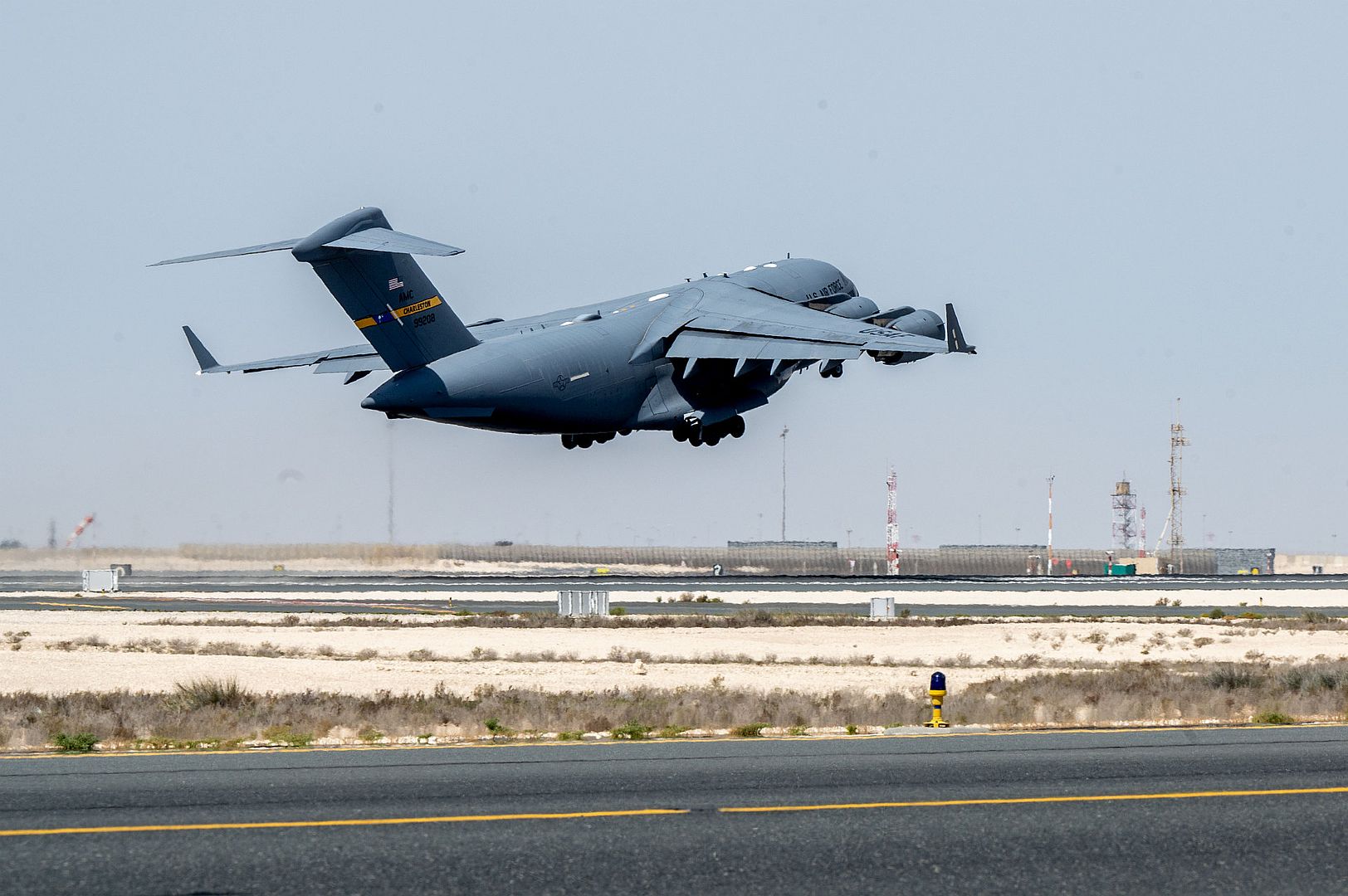
A U.S. Air Force C-130J Super Hercules loaded with pallets of food and water destined for Gaza via airdrop takes off at an undisclosed location within the U.S. Central Command area of responsibility, March 13, 2024. Delivering humanitarian aid through an airdrop ensures the aid is received by civilians most in need without delay for communities that may be difficult to reach on the ground.(U.S. Air Force photo)
British Royal Navy Petty Officer Sam Geere, 847th Squadron crewman, walks in front of a Wildcat helicopter after completing a rescue operation during Nordic Response 24 in BKåfjorddalen, Norway, March 7, 2024. NR24 enhances familiarity and proficiency operating in Arctic conditions, improving joint and service operations in the region. (U.S. Air Force photo by Tech. Sgt. Justin Carnahan)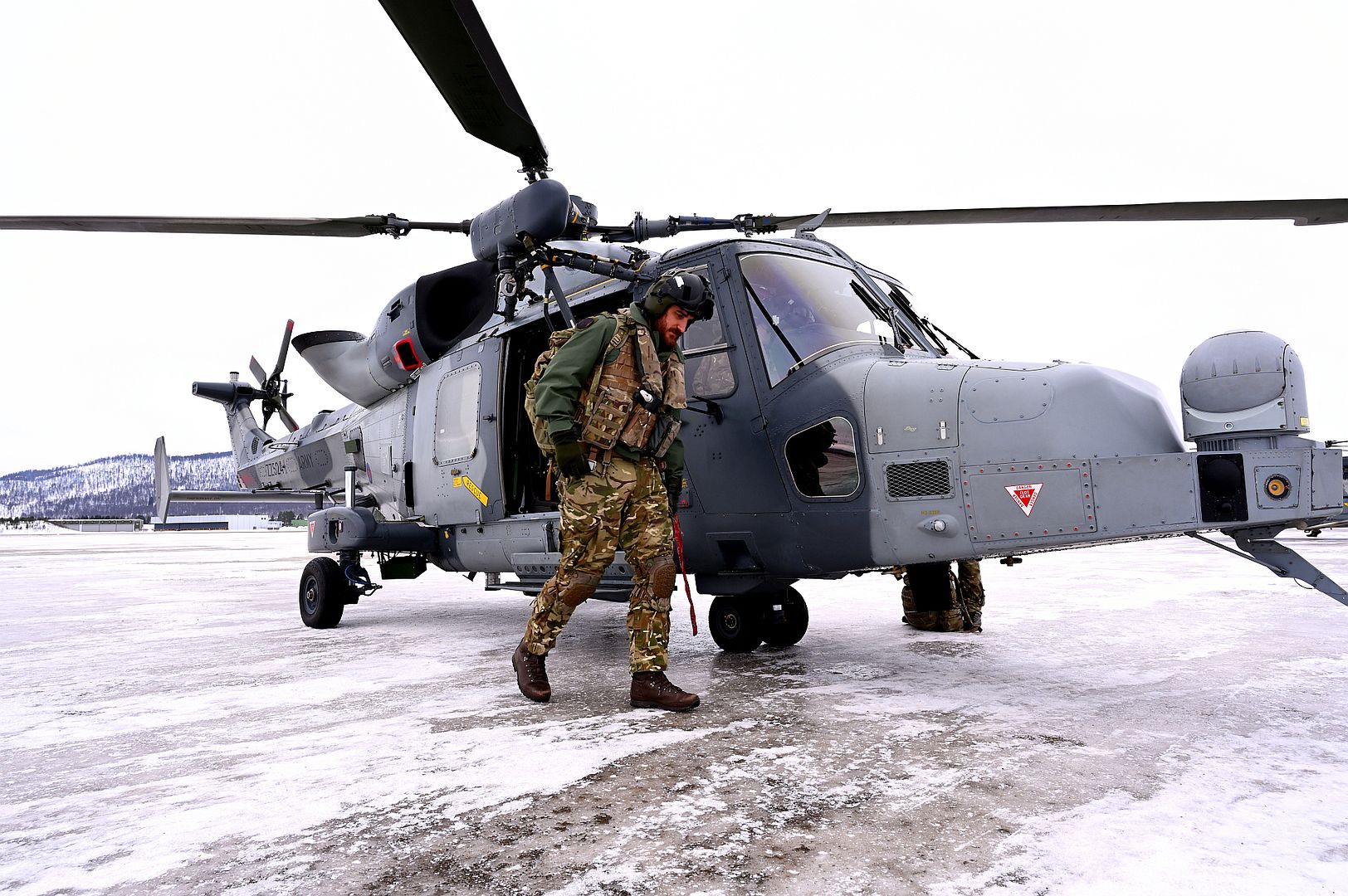
WICHITA, Kan. (March 13, 2024) — Textron Aviation today announced the award of a contract by the U.S. Army Contracting Command, Redstone Arsenal, AL, for two Cessna Grand Caravan EX turboprop aircraft. The aircraft will be owned and operated by the Djiboutian Air Force (DAF). This acquisition is the third delivery order under a recently established indefinite delivery, indefinite quantity (IDIQ) contract that allows up to $100 million U.S. dollars for the acquisition of Textron Aviation aircraft over a five-year period.
The Cessna Grand Caravan EX is designed and manufactured by Textron Aviation Inc., a Textron Inc. (NYSE:TXT) company.
“The two special missions Cessna Grand Caravan EX aircraft will be Intelligence, Surveillance, and Reconnaissance equipped to ensure the border sovereignty of the country of Djibouti,” said Bob Gibbs, vice president, Special Mission Sales for Textron Aviation. “This multiyear contract allows the U.S. Army Security Assistance Command to rapidly procure Commercial off the Shelf (COTS) aircraft and modifications from Textron Aviation for our Foreign Military Sale allies and partner nations. We are honored to assist in advancing U.S. national security and foreign policy interests by providing our solutions under the IDIQ and we look forward to further cooperation with the U.S. Army.”
This order follows the recent placement of delivery orders for three Beechcraft King Air 360ER aircraft two destined for the Peruvian Naval Aviation Force (Fuerza de Aviación Naval) and one the Ecuadorian Naval Aviation (Aviación Naval Ecuatoriana). With the addition of the two Cessna Grand Caravan EX for the Djiboutian Air Force, five aircraft have been ordered under the IDIQ contract.
About the Cessna Grand Caravan EX
The Cessna Caravan platform has seen more than 3,000 aircraft delivered that are certified in 100 countries with nearly 24 million flight hours amassed worldwide since the aircraft was introduced. Caravans fulfill roles for multiple missions, ranging from flight training to recreation, commuter airlines to VIP transport, cargo carriers and humanitarian missions. The Grand Caravan EX aircraft is known for its dependable and efficient performance by regional airlines, charter operators, cargo carriers and special missions operators worldwide. The aircraft offers an impressive output of 867 horsepower and a rate of climb of 1,275 feet per minute.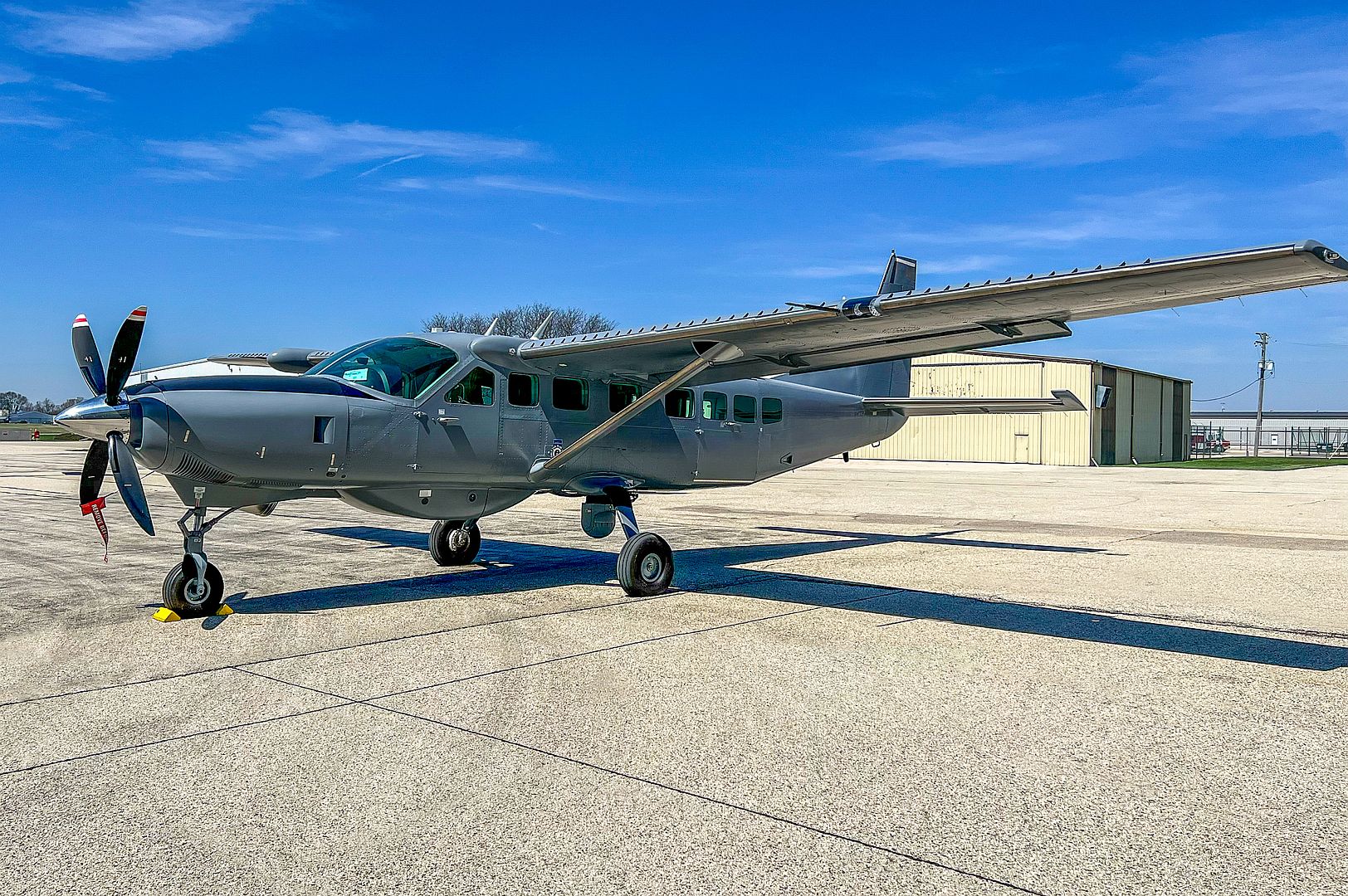
-
1 year agoThu Mar 14 2024, 08:41pmDuggy
 Main AdminA Finnish Air Force F/A-18C Hornet pilot taxis on a flightline to conduct aviation-delivered ground refueling with Marine Aerial Refueler Transport Squadron (VMGR) 252, 2nd Marine Aircraft Wing, during Exercise Nordic Response 24 at Andenes, Norway, March 12, 2024. Exercise Nordic Response is designed to enhance military capabilities and allied cooperation in high-intensity warfighting scenarios under challenging arctic conditions, while providing U.S. Marines unique opportunities to train alongside NATO allies and partners. (U.S. Marine Corps photos by Cpl. Christopher Hernandez)
Main AdminA Finnish Air Force F/A-18C Hornet pilot taxis on a flightline to conduct aviation-delivered ground refueling with Marine Aerial Refueler Transport Squadron (VMGR) 252, 2nd Marine Aircraft Wing, during Exercise Nordic Response 24 at Andenes, Norway, March 12, 2024. Exercise Nordic Response is designed to enhance military capabilities and allied cooperation in high-intensity warfighting scenarios under challenging arctic conditions, while providing U.S. Marines unique opportunities to train alongside NATO allies and partners. (U.S. Marine Corps photos by Cpl. Christopher Hernandez)_252_.jpg?width=1920&height=1080&fit=bounds)
_252-1_.jpg?width=1920&height=1080&fit=bounds)
A U.S. Marine Corps MV-22 Osprey tiltrotor aircraft assigned to Marine Medium Tiltrotor Squadron (VMM) 165 (Reinforced), 15th Marine Expeditionary Unit, taxies before takeoff at Marine Corps Air Station Miramar, California, March 12, 2024, marking the first operational flight of a I Marine Expeditionary Force MV-22 since the tiltrotor aircraft’s return to flight. The Marine Corps returned its MV-22s to flight status on March 8, 2024, following Naval Air Systems Command’s (NAVAIR) announcement that deemed the aircraft safe to fly. The Marine Corps’ three-phased approach begins with a focus on regaining basic flight currency, rebuilding units instructor cadres, and achieving proficiency in Core and Basic skill training for pilots and aircrew. (U.S. Marine Corps photo by Chief Warrant Officer 2 Trent Randolph)_165.jpg?width=1920&height=1080&fit=bounds)
RED SEA (March 12, 2024) An F/A-18E Super Hornet, attached to the "Wildcats" of Strike Fighter Squadron (VFA) 131, prepares for flight operations aboard the Nimitz-class aircraft carrier USS Dwight D. Eisenhower (CVN 69) in the Red Sea, March 12. The Dwight D. Eisenhower Carrier Strike Group is deployed to the U.S. 5th Fleet area of operations to support maritime security and stability in the Middle East region. (Official U.S. Navy photo)_131_prepares_for_flight_operations_aboard_the_Nimitz-class_aircraft_carrier_USS_Dwight_D._Eisenhower.jpg?width=1920&height=1080&fit=bounds)
A U.S. Air Force KC-135 Stratotanker assigned to the 100th Air Refueling Wing, right, sits next to a 168th Wing, Alaska Air National Guard KC-135, left, at Sola Air Station, Stavanger, Norway, March 13, 2024. The 100th ARW exercised their ability to implement reactive agile combat employment during exercise Nordic Response 24 when they had to divert into Stavanger to sustain flying operations for NR24. The unexpected location shift highlighted the ability of U.S. forces to land at an Ally’s base, rapidly setup and begin flying operations alongside their ANG counterparts. Movement and maneuverability are critical elements of ACE and require integration with our Allies and partners to be effective. (U.S. Air Force photo by Tech. Sgt. Steven Adkins)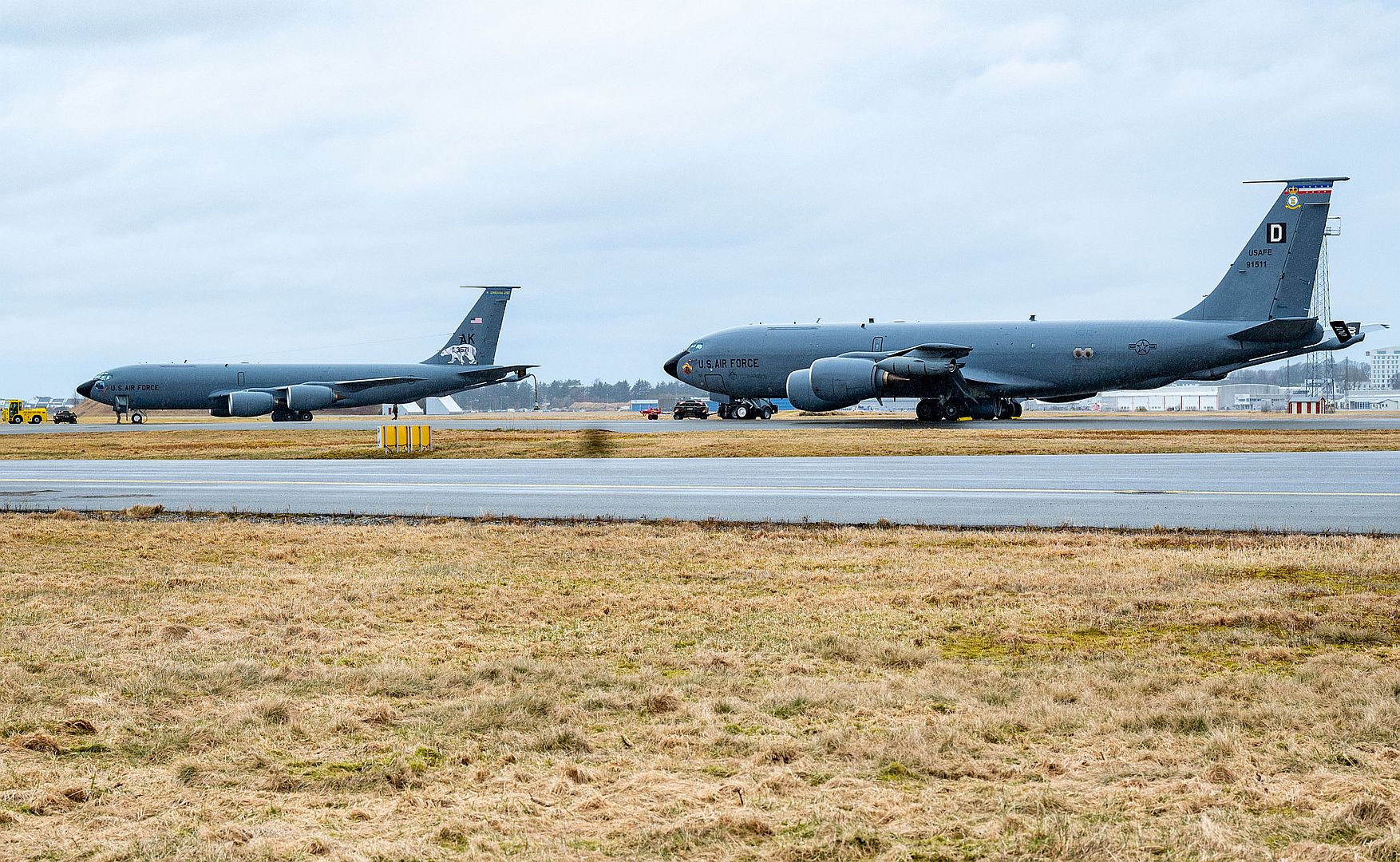
A U.S. Air Force KC-135 Stratotanker from the 168th Wing, Alaska Air National Guard, conducts air refueling with a U.S. Marine Corps F/A-18 Hornet from the 2nd Marine Aircraft Wing during exercise Nordic Response 24 in tactical air space over Sweden, March 12, 2024. NR24 enhances familiarity and proficiency operating in Arctic conditions, improving joint and service operations in the region. (U.S. Air Force photo by Tech. Sgt. Steven Adkins)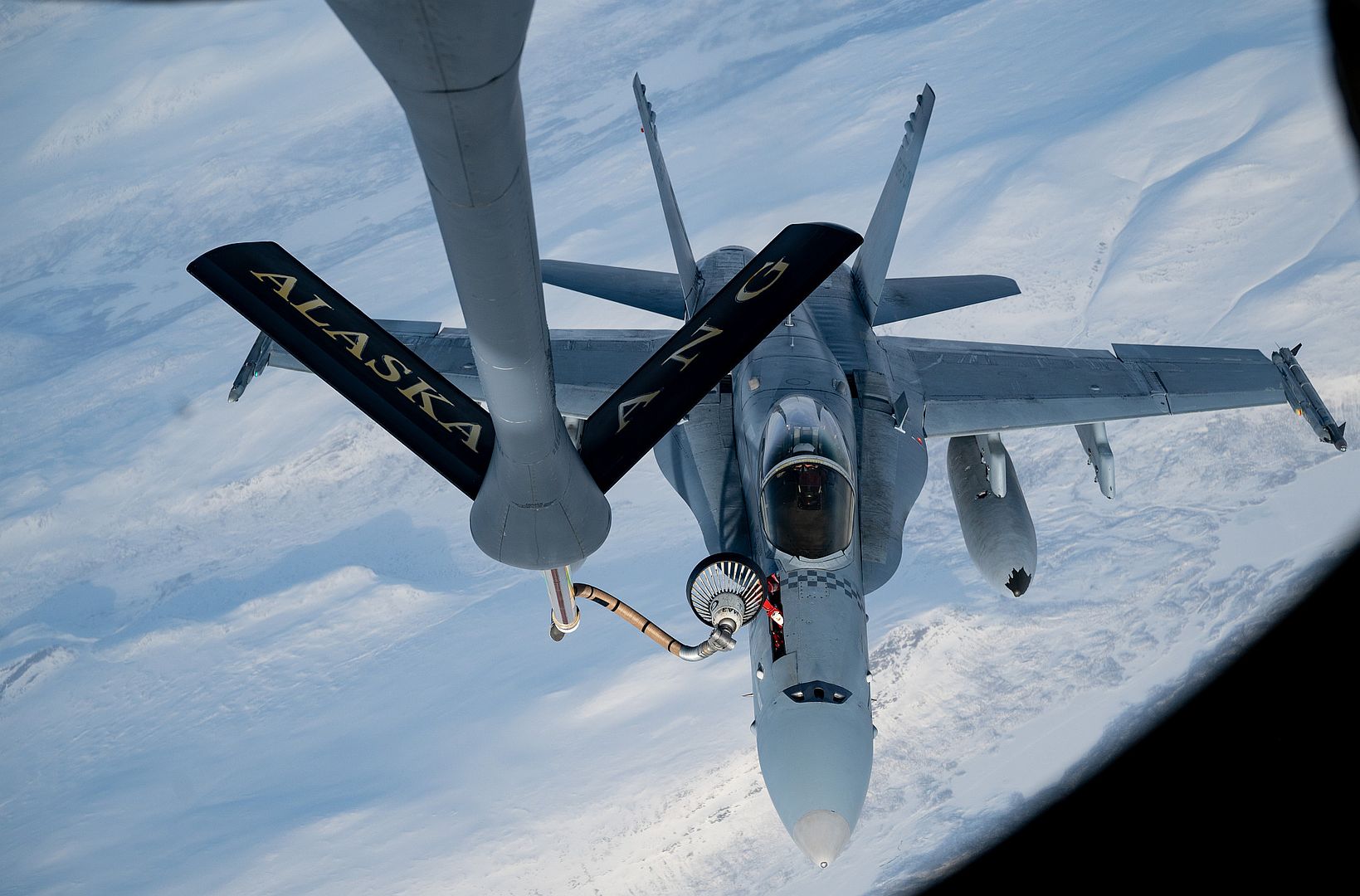
The 173rd Fighter Wing’s heritage F-15 Eagle taxis February 27, 2024, at Honolulu International Airport, Hawaii. The uniquely designed aircraft is adorned with a memorial paint design, paying tribute to the legacy of Lt. David R. Kingsley, a World War II Medal of Honor Recipient. Eagles from Kingsley Field, Oregon, trained alongside locally based F-22 Raptors, from the 199th and 19th Fighter Squadrons, as part of exercise Sentry Luau. (U.S. Air National Guard photo by Tech. Sgt. John Linzmeier)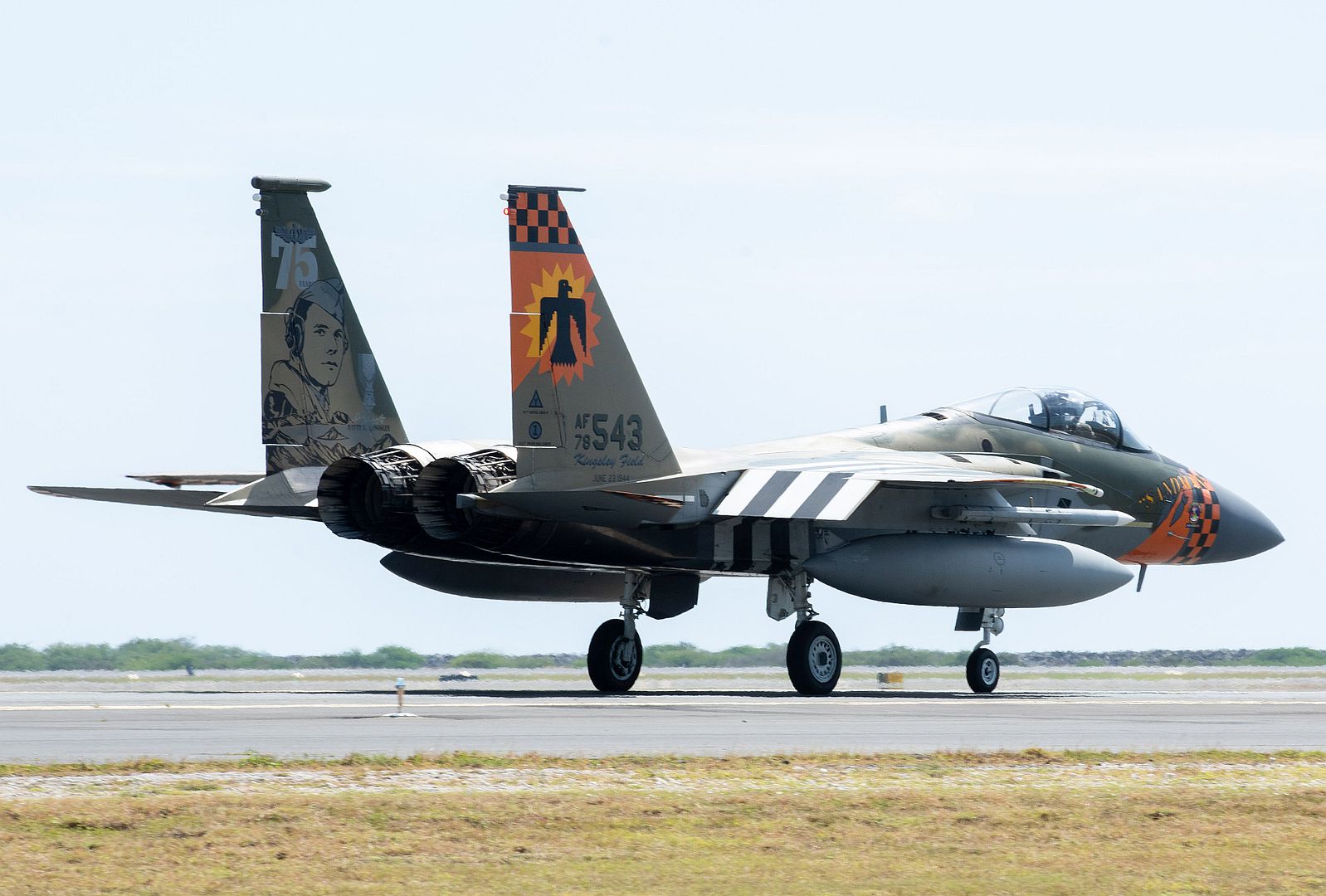
The 173rd Fighter Wing’s heritage F-15 Eagle takes off March 7, 2024, at Honolulu International Airport, Hawaii. The uniquely designed aircraft is adorned with a memorial paint design, paying tribute to the legacy of Lt. David R. Kingsley, a World War II Medal of Honor Recipient. Eagles from Kingsley Field, Oregon, trained alongside locally based F-22 Raptors, from the 199th and 19th Fighter Squadrons, as part of exercise Sentry Luau. (U.S. Air National Guard photo by Tech. Sgt. John Linzmeier)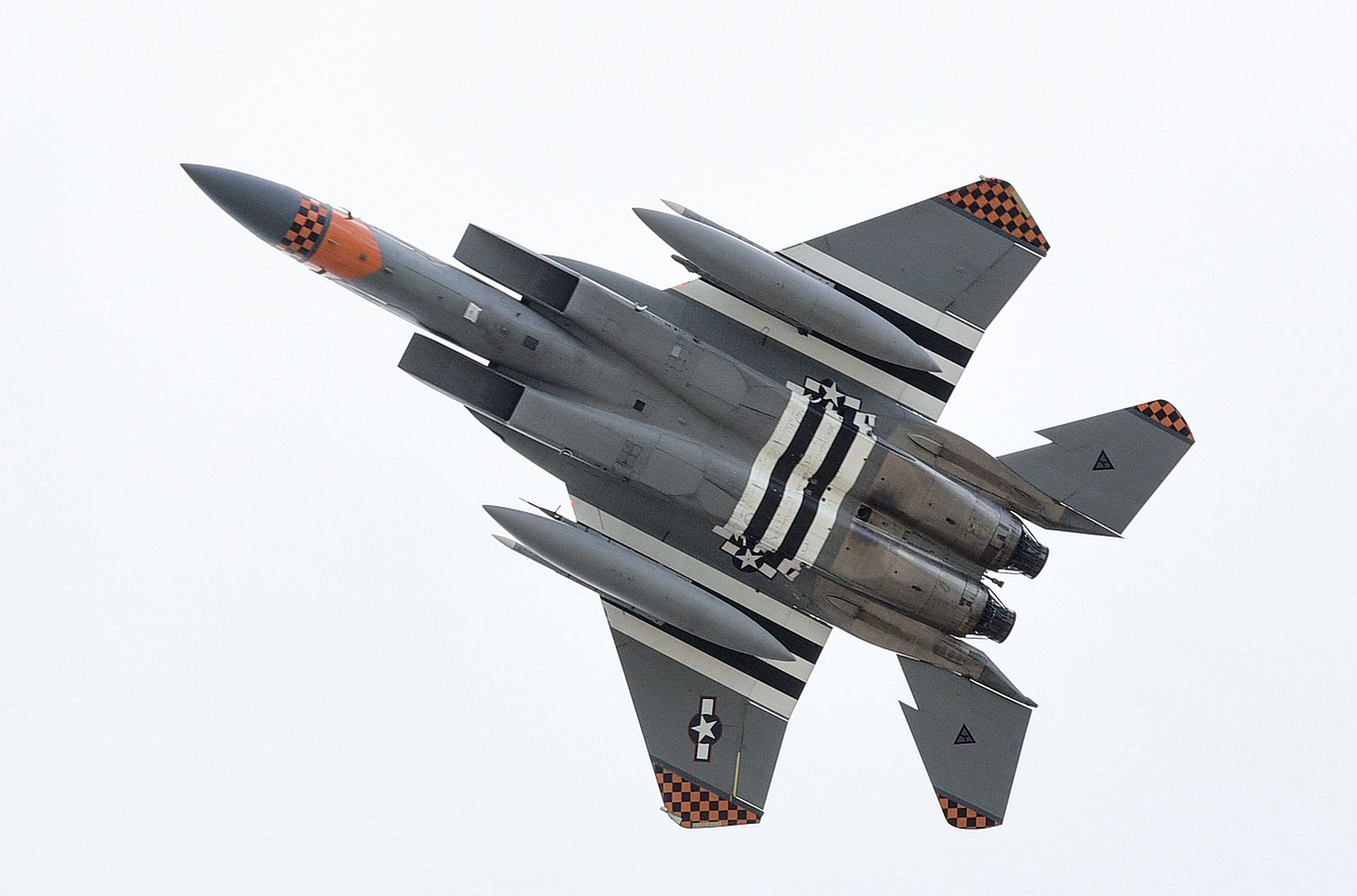
An F-22 Raptor maintainer services a Hawaii Air National Guard F-22 Raptor, operated by the 199th and 19th Fighter Squadrons, March 7, 2023, at Joint Base Pearl Harbor-Hickam, Hawaii, during exercise Sentry Luau. The two-weeklong training exercise was held to integrate the combat capabilities with locally based Raptors and visiting F-15 Eagles from the 173rd Fighter Wing. (U.S. Air National Guard photo by Tech. Sgt. John Linzmeier)
U.S. Airmen assigned to the 127th Wing, Michigan Air National Guard, conduct A-10C Thunderbolt II airfield operations as part of agile combat employment during the Agile Rage exercise, Avon Park, Florida, Feb. 28, 2024. Agile Rage 2024 is a National Guard Bureau (NGB)/A3 led military exercise, hosted at the Air Dominance Center, taking place from February 26 to March 8, 2024 that involves the collaborative efforts of various Air National Guard Wings conducting joint counter-land and combat search and rescue (CSAR) operations in a simulated medium to high threat environment. (U.S. Air National Guard photo by Master Sgt. Rafael D. Rosa)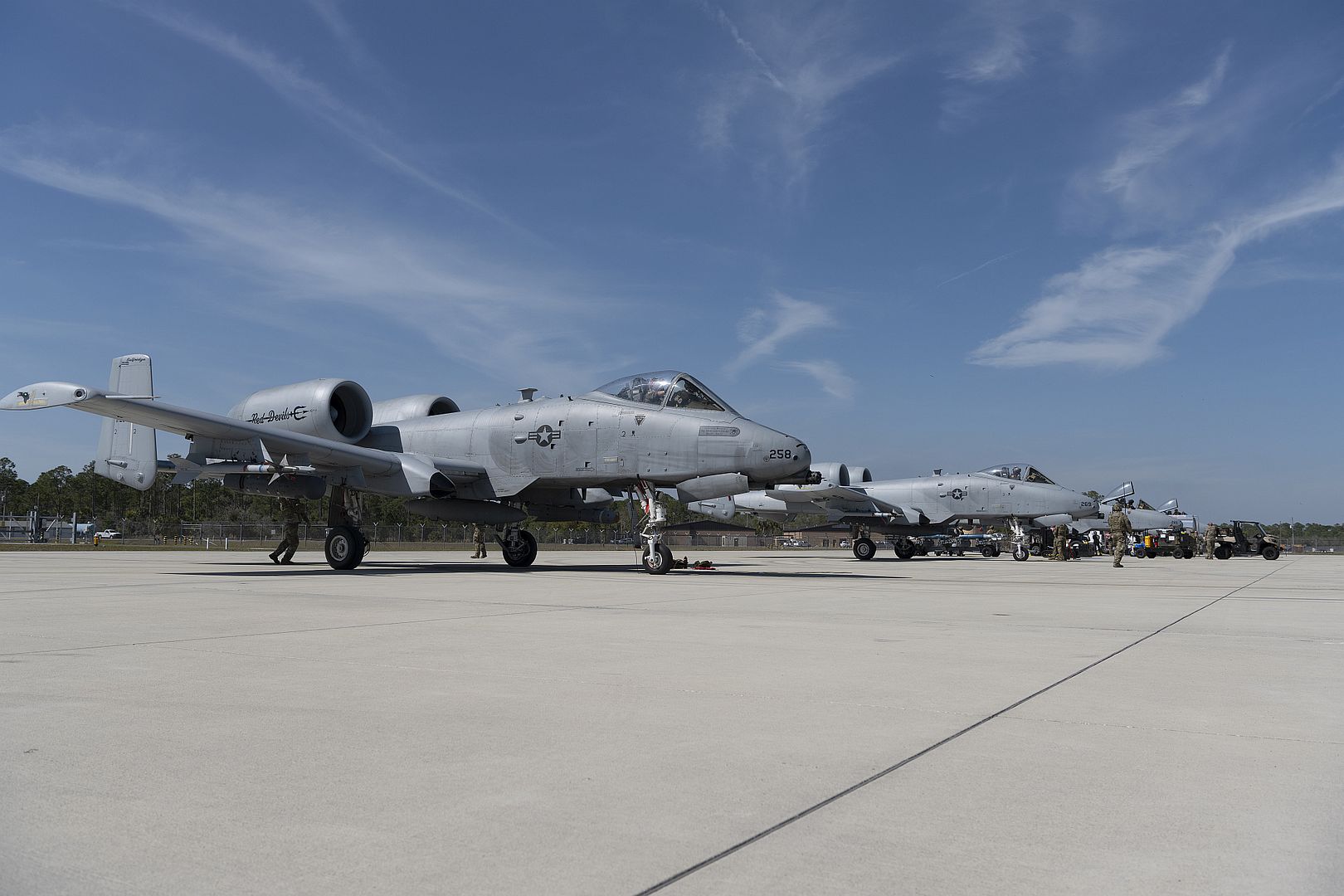
RED SEA (March 05, 2024) An F/A-18F Super Hornet attached to the "Fighting Swordsmen" of Strike Fighter Squadron (VFA) 32 launches from the flight deck of the Nimitz-class aircraft carrier USS Dwight D. Eisenhower (CVN 69) in the Red Sea, March 5, 2024. The Dwight D. Eisenhower Carrier Strike Group is deployed to the U.S. 5th Fleet area of operations to support maritime security and stability in the Middle East region. (Official U.S. Navy photo by MCSA Caroline Pontier)_32_launches_from_the_flight_deck_of_the_Nimitz-class_aircraft_carrier_USS_Dwight_D._Eisenhower.jpg?width=1920&height=1080&fit=bounds)
São José dos Campos, Brazil, March 14, 2024 – Embraer has secured 120 minute extended twin-engine operations (ETOPS) approval for the E190-E2 and E195-E2 from the Brazil’s Civil Aviation Authority ANAC (Agência Nacional de Aviação Civil), FAA (Federal Aviation Administration), and EASA (European Union Aviation Safety Agency). This capability paves the way for E2 operators to fly direct non-limiting routes over water and other remote areas, saving both time and fuel.
The granting of ETOPS-120 capability is testimony to the aircraft’s design and to the maturity of the systems; ETOPS certification requires the fleet of aircraft in operation to reach cumulative flying hour milestones. ETOPS certification for the E2 comes later than expected due to the global pandemic which significantly reduced aircraft operations, slowing down the accumulation of flying hours required.
Arjan Meijer, President and CEO Embraer Commercial Aviation, said, “ETOPS is an important additional capability for the E2, and a key enabler for more sales, especially in Asia Pacific. Airlines flying routes with up to 120 minute diversion time will be able to use straighter, quicker and more fuel efficient routes, and have access to more diversion airports. ETOPS capability is a further optimisation of the E2, already the most fuel efficient aircraft in its segment.”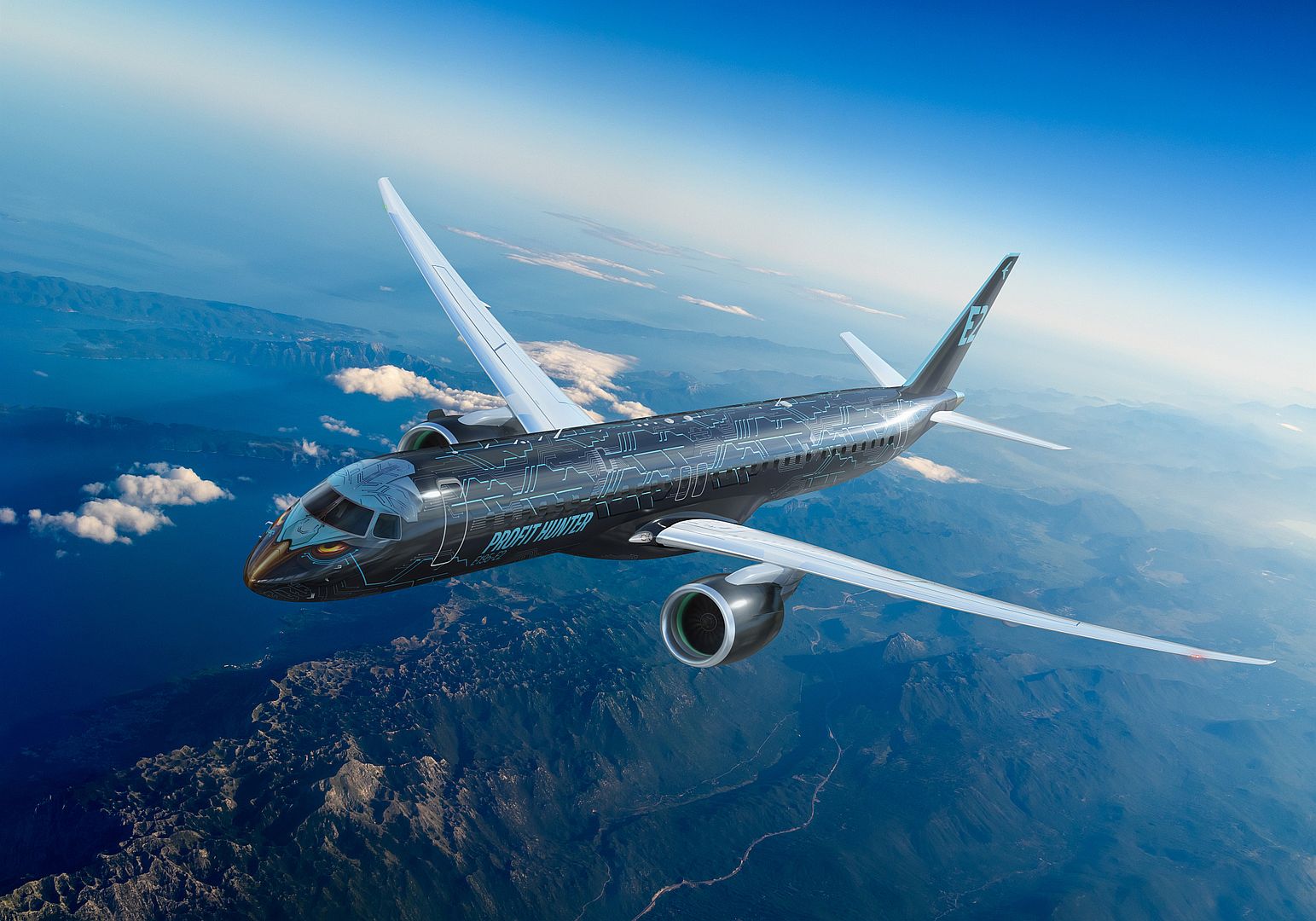
-
1 year agoFri Mar 15 2024, 07:49pmDuggy
 Main AdminU.S. Marines with Marine Aerial Refueler Transport Squadron (VMGR) 252, 2nd Marine Aircraft Wing (MAW), refuel an F-35B Lightning II jet with Marine Fighter Attack Squadron (VMFA) 542, 2nd MAW, using aviation-delivered ground refueling during Exercise Nordic Response 24 in Lulea, Sweden, March 13, 2024. VMFA-542 and VMGR-252 demonstrated aviation-delivered ground refueling during a distributed aviation operation to showcase expeditionary advanced-base operations using host-nation support. The training event marked the first U.S. F-35 landing in Sweden at Kallax Air Base. Exercise Nordic Response 24 is designed to enhance military capabilities and allied cooperation in high-intensity warfighting scenarios under challenging arctic conditions while providing U.S. Marines unique opportunities to train alongside NATO allies and partners. (U.S. Marine Corps photos by Lance Cpl. Orlanys Diaz Figueroa)
Main AdminU.S. Marines with Marine Aerial Refueler Transport Squadron (VMGR) 252, 2nd Marine Aircraft Wing (MAW), refuel an F-35B Lightning II jet with Marine Fighter Attack Squadron (VMFA) 542, 2nd MAW, using aviation-delivered ground refueling during Exercise Nordic Response 24 in Lulea, Sweden, March 13, 2024. VMFA-542 and VMGR-252 demonstrated aviation-delivered ground refueling during a distributed aviation operation to showcase expeditionary advanced-base operations using host-nation support. The training event marked the first U.S. F-35 landing in Sweden at Kallax Air Base. Exercise Nordic Response 24 is designed to enhance military capabilities and allied cooperation in high-intensity warfighting scenarios under challenging arctic conditions while providing U.S. Marines unique opportunities to train alongside NATO allies and partners. (U.S. Marine Corps photos by Lance Cpl. Orlanys Diaz Figueroa)_542_2nd_MAW_using_aviation-delivered_ground_refueling_during_Exercise_Nordic_Response_24_in_Lulea_Sweden_March_13_2024-1.jpg?width=1920&height=1080&fit=bounds)
_542_2nd_MAW_using_aviation-delivered_ground_refueling_during_Exercise_Nordic_Response_24_in_Lulea_Sweden_March_13_2024.jpg?width=1920&height=1080&fit=bounds)
_542_2nd_MAW_using_aviation-delivered_ground_refueling_during_Exercise_Nordic_Response_24_in_Lulea_Sweden_March_13_2024-2.jpg?width=1920&height=1080&fit=bounds)
A U.S. Air Force HH-60G Pave Hawk assigned to the 33rd Rescue Squadron conducts helicopter air-to-air refueling with a U.S. Marine Corps KC-130J Super Hercules assigned to Marine Aerial Refueler Transport Squadron (VMGR) 152 over the Pacific Ocean, March 13, 2024. Search and rescue operations benefit from HAAR as it acts as a force extender, keeping rescue assets in the air longer to recover isolated personnel. (U.S. Air Force photo by Senior Airman Tylir Meyer)
A remotely piloted MQ-9 Reaper from the 163rd Attack Wing sits in front of the 178th Wing hanger on Springfield-Beckley Air National Guard Base, Ohio, March 13, 2024. Exercise Advanced Wrath gives the 178th Wing an opportunity to support an MQ-9 Reaper locally with airmen from across the country. (U.S. Air National Guard photo by A1C Colin Simpson)
A U.S. Air Force C-130J Super Hercules loaded with humanitarian aid destined for Gaza via airdrop takes off at an undisclosed location within the U.S. Central Command area of responsibility, March 15, 2024. Since March 2, The U.S. military and partner nations have worked together to expedite critical, life-saving supplies via airdrop to civilians in need in Gaza. (U.S. Air Force photo by Airman 1st Class Caleb Parker)
A U.S. Marine Corps F-35C Lightning II assigned to Marine Fighter Attack Squadron (VMFA) 314, Marine Aircraft Group 11, 3rd Marine Aircraft Wing, and two AGM-154 Joint Standoff Weapon (JSOW) are staged at Marine Corps Air Station Miramar, California, March 8, 2024. The JSOW is a fire-and-forget medium-range precision guided weapon intended for use against soft targets. This loading of the JSOW is the first loading of the weapon system on the F-35C and the first time being loaded in a garrison environment in nearly 20 years.
(Photos by Sgt. Sean Potter)_314_Marine_Aircraft_Group_11_3rd_Marine_Aircraft_Wing_and_two_AGM-154_Joint_Standoff_Weapon.jpg?width=1920&height=1080&fit=bounds)
_314_Marine_Aircraft_Group_11_3rd_Marine_Aircraft_Wing_and_two_AGM-154_Joint_Standoff_Weapon-1.jpg?width=1920&height=1080&fit=bounds)
An F-16 Aggressor assigned to the 706th Aggressor Squadron takes off for Red Flag-Nellis 24-2 mission at Nellis AFB, Nevada, March 12, 2024. During Red Flag exercises, the aggressors are providing realistic, threat-representative, near-peer adversary air for high-end US and coalition training.
(U.S. Air Force photo by William R. Lewis)
A U.S. Marine Corps F-18C Hornet assigned to Marine Fighter Attack Squadron 323, Marine Corps Air Station Miramar, California, takes off for a Red Flag-Nellis mission at Nellis AFB, Nevada, March 12, 2024. This Red Flag will provide more complex target areas, camouflage and concealment techniques in multiple spectrums and introduce realistic scenarios forcing reattacks in accordance with acceptable levels of risk as it concentrates on the European Theater. (U.S. Air Force photo by William R. Lewis)
A U.S. Marine F-35B Lightning II assigned to Marine Fighter Attack Squadron 242, Iwakuni, Japan, takes off for Red Flag-Nellis 24-2 mission at Nellis AFB, Nevada, March 12, 2024. The increasing number of nations obtaining F-35s in Europe signals a noteworthy trend, fostering expectations that the region will host over 600 operational F-35s by 2030. (U.S. Air Force photo by William R. Lewis)
An F-15E Strike Eagle assigned to the 366th Fighter Wing, Mountain Home Air Force Base, Idaho, takes off for Red Flag-Nellis 24-2 mission at Nellis Air Force Base, Nevada, March 12, 2024. Red Flag exercises build partnerships and interoperability among our allies and across domains. (U.S. Air Force photo by William R. Lewis)
A Royal Netherlands Air Force F-35A takes off for Red Flag-Nellis 24-2 mission at Nellis AFB, Nevada, March 12, 2024.The integration of fifth-generation assets, such as the F-35, is a vital step towards enhancing our collective security. These advanced aircraft bring unprecedented capabilities, including enhanced stealth, sensor fusion, and network connectivity, which enable us to maintain air superiority and deter potential adversaries. (U.S. Air Force photo by William R. Lewis)
A U.S. Air Force F-35A Lightning II Aggressor assigned to 65th Aggressor Squadron (AGRS), Nellis Air Force Base (AFB), takes off for Red Flag-Nellis 24-2 mission at Nellis AFB, Nevada, March 12, 2024. The 65th AGRS is the only 5th Gen. AGRS in the Air Force and provides high-end adversary training for U.S and allies forces. (U.S. Air Force photo by William R. Lewis)_Nellis_Air_Force_Base_(AFB)_takes_off_for_Red_Flag-Nellis_24-2_mission_at_Nellis_AFB_Nevada_March_12_2024..jpg?width=1920&height=1080&fit=bounds)
-
1 year agoMon Mar 18 2024, 07:46pmDuggy
 Main AdminU.S. Marine AV-8B Harriers assigned to Marine Attack Squadron 231 Detachment, Marine Medium Tiltrotor Squadron 162 (Reinforced), 26th Marine Expeditionary Unit (Special Operations Capable) land on an airfield after returning from deployment at Marine Corps Air Station Cherry Point, North Carolina, Mar. 16, 2024. Marines and Sailors assigned to the 26th MEU(SOC) returned home after completing an eight-month deployment embarked aboard the Bataan Amphibious Ready Group. During its deployment, the BAT ARG and 26th MEU(SOC) team participated in a wide array of exercises with NATO Allies and regional partners spanning across the Tri-Geographic Combatant Command to enhance interoperability, MAGTF readiness, and provide crisis response options. (U.S. Marine Corps Photos by Cpl. Aziza Kamuhanda)
Main AdminU.S. Marine AV-8B Harriers assigned to Marine Attack Squadron 231 Detachment, Marine Medium Tiltrotor Squadron 162 (Reinforced), 26th Marine Expeditionary Unit (Special Operations Capable) land on an airfield after returning from deployment at Marine Corps Air Station Cherry Point, North Carolina, Mar. 16, 2024. Marines and Sailors assigned to the 26th MEU(SOC) returned home after completing an eight-month deployment embarked aboard the Bataan Amphibious Ready Group. During its deployment, the BAT ARG and 26th MEU(SOC) team participated in a wide array of exercises with NATO Allies and regional partners spanning across the Tri-Geographic Combatant Command to enhance interoperability, MAGTF readiness, and provide crisis response options. (U.S. Marine Corps Photos by Cpl. Aziza Kamuhanda)_26th_Marine_Expeditionary_Unit-2.jpg?width=1920&height=1080&fit=bounds)
_26th_Marine_Expeditionary_Unit.jpg?width=1920&height=1080&fit=bounds)
_26th_Marine_Expeditionary_Unit-1.jpg?width=1920&height=1080&fit=bounds)
F-35A Lightning IIs from Eielson Air Force Base, Alaska and F-16C Fighting Falcons from Kunsan Air Base, Republic of Korea, prepare to taxi prior to the start of Cope Tiger 2024, Korat Royal Thai Air Force Base, Thailand, March 12, 2024. U.S. participation in Cope Tiger demonstrates our commitment to two integral partner nations. Working together we have partnered to address regional security threats, humanitarian crises, and natural disasters. (U.S. Air Force photos by Tech. Sgt. Hailey Haux)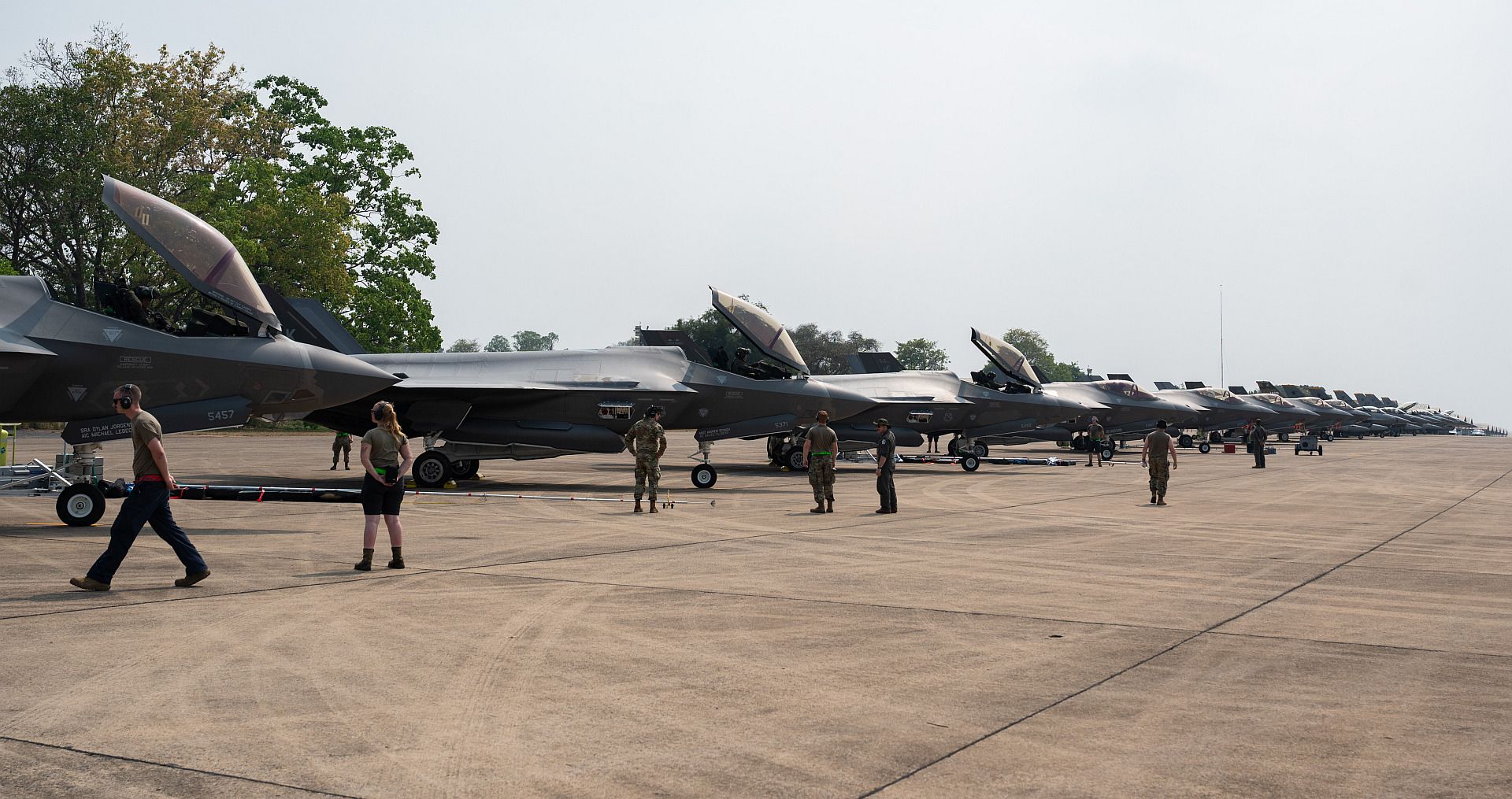
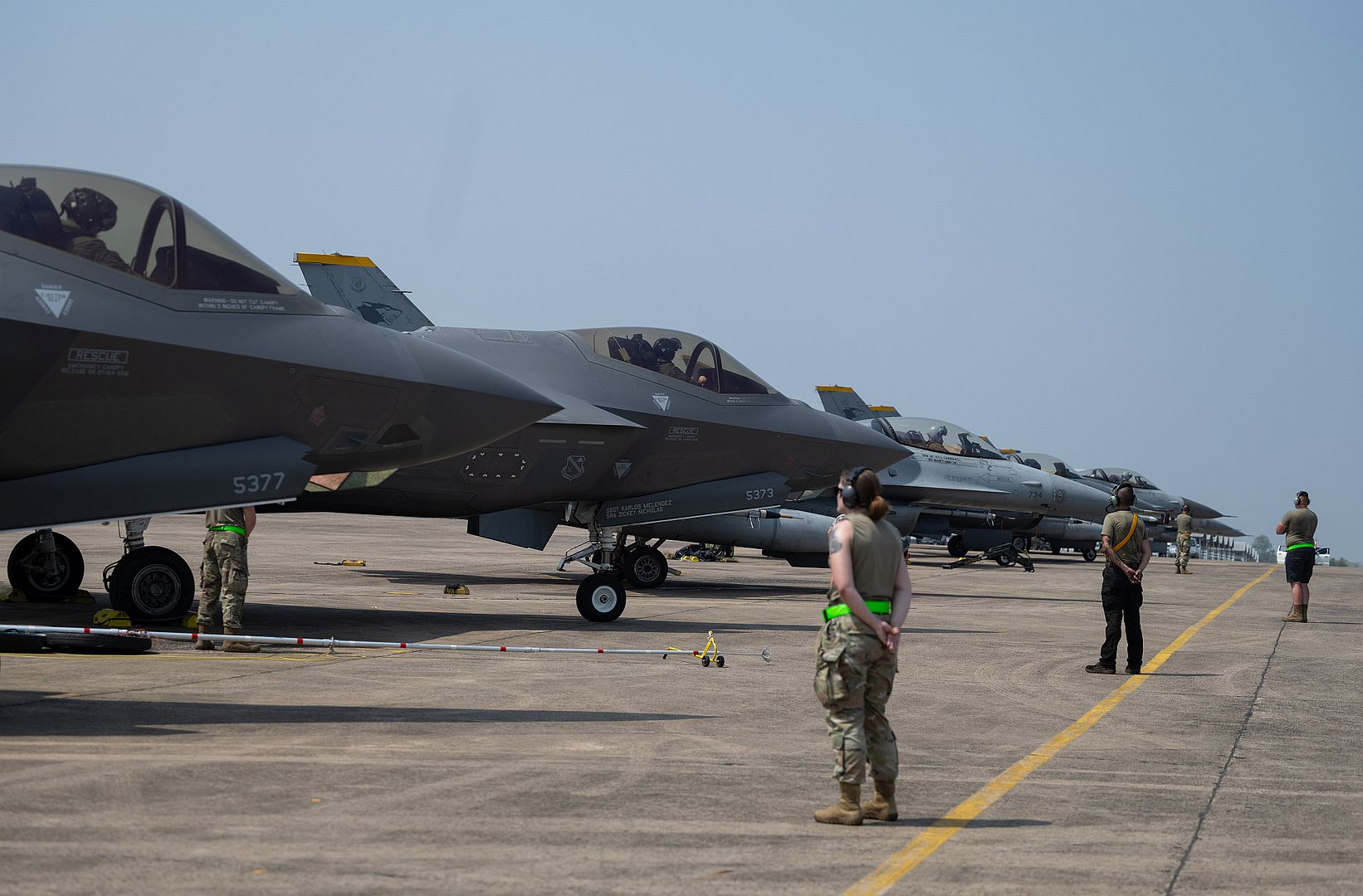
A T-33 assigned to Ace Maker Airshows, left, and a MiG-17, flown by Jason Somes, perform aerobatic maneuvers together during the Travis Air Force Base Wings Over Solano air show and open house at Travis AFB, California, March 17, 2024. The two-day event also featured performances by the U.S. Navy Blue Angels and the U.S. Air Force F-22 Raptor Demonstration Team. (U.S. Air Force photo by Kenneth Abbate)
WASHINGTON – March 18, 2024 – Northrop Grumman Corporation (NYSE: NOC) received the Aviation Week Grand Laureate Award in the defense category for its role as the prime contractor delivering the B-21 Raider to the United States Air Force. Aviation Week announced the Grand Laureate winners at its 66th Annual Laureate awards in Washington, D.C.
“On behalf of the entire nationwide B-21 Raider team, Northrop Grumman is honored to receive this prestigious award,” said Tom Jones, corporate vice president and president, Northrop Grumman Aeronautics Systems. “The Grand Laureate represents the pioneering spirit, innovative technology and trailblazing approach to contract management that has brought the world’s first sixth-generation aircraft to life.”
In the fall of 2023, the Air Force confirmed the first B-21 test vehicle had entered flight test, followed by low-rate initial production award. The aircraft is currently undergoing a robust flight test campaign executed by the B-21 Combined Test Force at Edwards Air Force Base in California. The program continues to meet all DoD technical, schedule and affordability requirements on its path to operational capability.
Developed with the next generation of stealth technology, advanced networking capabilities and open systems architecture, the B-21 Raider will serve as the backbone of America’s bomber fleet. Capable of delivering both conventional and nuclear payloads, the B-21 will be one of the most effective aircraft in the sky, with the ability to use a broad mix of stand-off and direct attack munitions.
Northrop Grumman is a leading global aerospace and defense technology company. Our pioneering solutions equip our customers with the capabilities they need to connect and protect the world, and push the boundaries of human exploration across the universe. Driven by a shared purpose to solve our customers’ toughest problems, our employees define possible every day.
-
1 year agoTue Mar 19 2024, 08:24pmDuggy
 Main AdminVicky Benzing, 1940 Boeing Stearman Model 75 pilot, performs aerobatic maneuvers during the Travis Air Force Base Wings Over Solano air show and open house at Travis AFB, California, March 17, 2024. The Travis AFB Wings Over Solano air show and open house provided an opportunity for the local community to directly interact with the base and its Airmen. (U.S. Air Force photo by Chustine Minoda)
Main AdminVicky Benzing, 1940 Boeing Stearman Model 75 pilot, performs aerobatic maneuvers during the Travis Air Force Base Wings Over Solano air show and open house at Travis AFB, California, March 17, 2024. The Travis AFB Wings Over Solano air show and open house provided an opportunity for the local community to directly interact with the base and its Airmen. (U.S. Air Force photo by Chustine Minoda)
U.S. Navy Blue Angels perform aerobatic formation maneuvers during the Travis Air Force Base Wings Over Solano air show and open house at Travis AFB, California, March 17, 2024. The demo team’s mission is to inspire future aviators, aerospace engineers and maintenance technicians. (U.S. Air Force photo by Chustine Minoda)
A remotely piloted MQ-9 Reaper from the 163rd Attack Wing sits in the 178th Wing hanger on Springfield-Beckley Air National Guard Base, Ohio, March 18, 2024. (U.S. Air National Guard photo by A1C Colin Simpson)
U.S. Air Force Staff Sgt. Roman Thomas (right), 56th Component Maintenance Squadron F-35A maintenance instructor, trains U.S. Marine Cpl. Thomas Hawley (center), VMFA-533 powerline plane captain, on F-35A Lightning II aircraft fuel system intricacies, March 12, 2024, at Luke Air Force Base, Arizona. U.S. Marine F-35C plane captains from Marine Corps Air Station Yuma participated in hot pit refueling training for F-35A aircraft to strengthen Agile Combat Employment (ACE), a strategic approach designed to ensure airpower survivability and resilience in contested environments. (U.S. Air Force photo by Airman 1st Class Mason Hargrove)
A U.S. Marine Corps F-35B Lightning II aircraft assigned to Marine Fighter Attack Squadron 121 taxis the flight line before taking off from Marine Corps Air Station Iwakuni, Japan, March 18, 2024. Marines with Marine Aircraft Group 12 routinely conduct flight operations throughout the Indo-Pacific to maintain a high level of combat proficiency. (U.S. Marine Corps photo by Sgt. Jose Angeles)
A U.S. Marine Corps F-35B Lightning II aircraft assigned to Marine Fighter Attack Squadron 121 takes off from Marine Corps Air Station Iwakuni, Japan, March 18, 2024. Marines with Marine Aircraft Group 12 routinely conduct flight operations throughout the Indo-Pacific to maintain a high level of combat proficiency. (U.S. Marine Corps photo by Sgt. Jose Angeles)
WICHITA, KS (March 18, 2024) — Textron Aviation today announced an agreement with California Aeronautical University for the purchase of 15 Cessna Skyhawk aircraft with deliveries beginning in 2027. The new aircraft will be added to their current fleet and will be used at the various Western United States locations including Bakersfield, CA, San Diego, CA, Ventura, CA and Mesa, AZ.
The Cessna Skyhawk is designed and manufactured by Textron Aviation Inc., a Textron Inc. (NYSE:TXT) company.
“For more than six decades, the Skyhawk has been at the forefront of innovation, empowering aspiring pilots and setting new standards in flight training,” said Chris Crow, vice president, Piston Sales. “We are delighted to continue inspiring the journey of flight by providing California Aeronautical University students access to the most produced single-engine aircraft globally.”
California Aeronautical University’s existing fleet of Textron Aviation aircraft includes Cessna Skyhawks and Beechcraft Barons. The additional aircraft will offer more resources expected to be needed with continued growth and help maintain an optimal student-to-aircraft ratio at the University, enabling students to begin flying in their first term and maintaining consistent aircraft availability throughout the entire duration of their training.
“We couldn't be more thrilled to announce this acquisition of Cessna Skyhawks, which marks a significant milestone in our commitment to providing top-tier aviation education,” said Matthew Johnston, President of California Aeronautical University. “These new aircraft will help elevate our flight training degree programs, ensuring our students receive the best possible learning experience and preparing them for successful careers in the aviation industry.”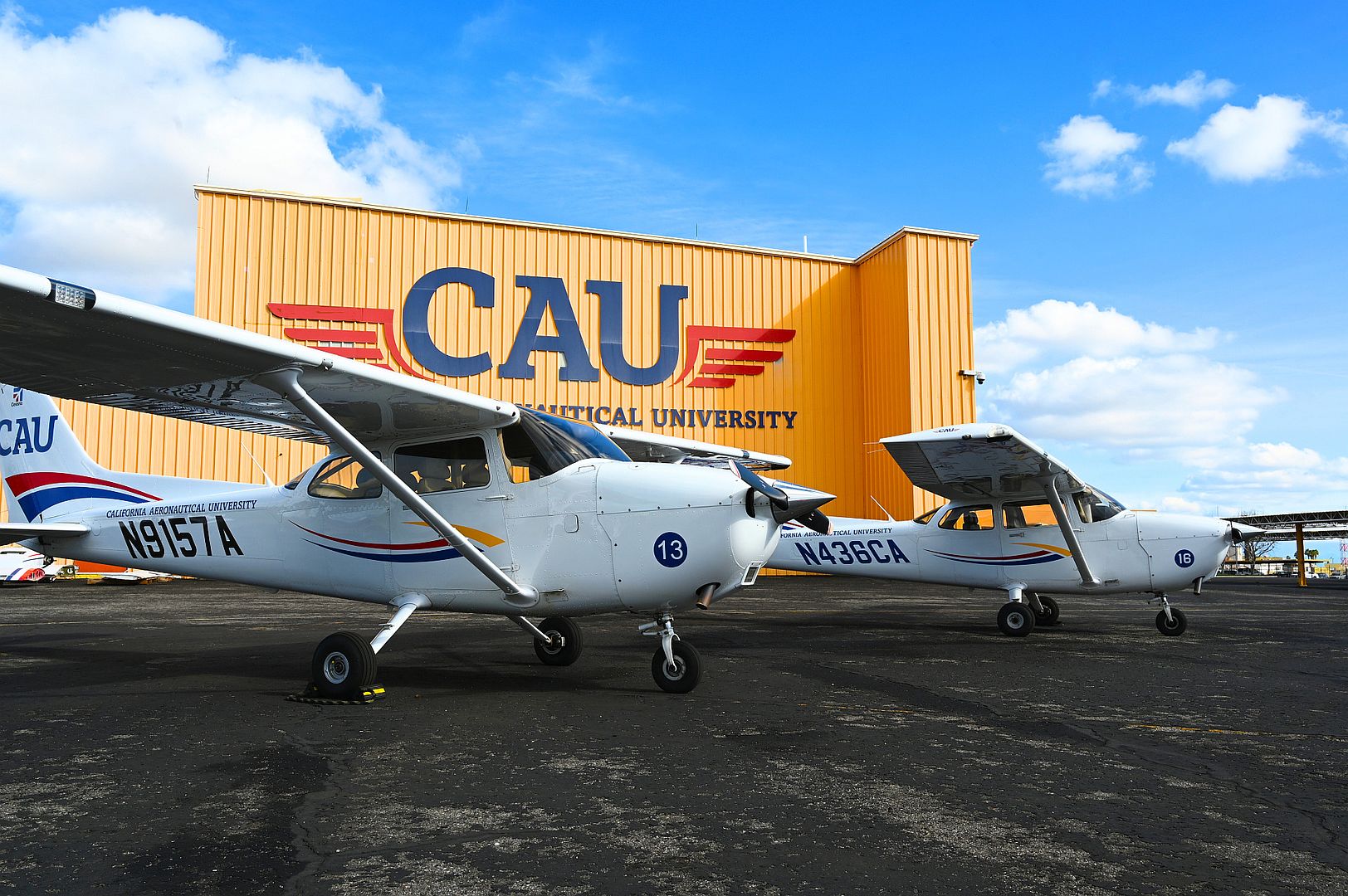
-
1 year agoWed Mar 20 2024, 07:53pmDuggy
 Main AdminNAVAL AIR STATION NORTH ISLAND, Calif. (March 19, 2024) – Maintainers, aviators, and aircrew assigned to Fleet Logistics Multi-Mission Squadron (VRM) 30 prepare a CMV-22B Osprey for a functional check flight on Naval Air Station North Island, Calif., March 19, 2024. Functional check flights are part of the Navy’s deliberate, multi-phased, conditions-based approach for return to safe flight operations. VRM-30 is the U. S. Navy’s first CMV-22B Osprey squadron, established to begin the Navy’s transition from the C-2A Greyhound as the aircraft for providing logistics support to aircraft carriers. (U.S. Navy photo by Mass Communication Specialist 1st Class Samantha P. Montenegro)
Main AdminNAVAL AIR STATION NORTH ISLAND, Calif. (March 19, 2024) – Maintainers, aviators, and aircrew assigned to Fleet Logistics Multi-Mission Squadron (VRM) 30 prepare a CMV-22B Osprey for a functional check flight on Naval Air Station North Island, Calif., March 19, 2024. Functional check flights are part of the Navy’s deliberate, multi-phased, conditions-based approach for return to safe flight operations. VRM-30 is the U. S. Navy’s first CMV-22B Osprey squadron, established to begin the Navy’s transition from the C-2A Greyhound as the aircraft for providing logistics support to aircraft carriers. (U.S. Navy photo by Mass Communication Specialist 1st Class Samantha P. Montenegro)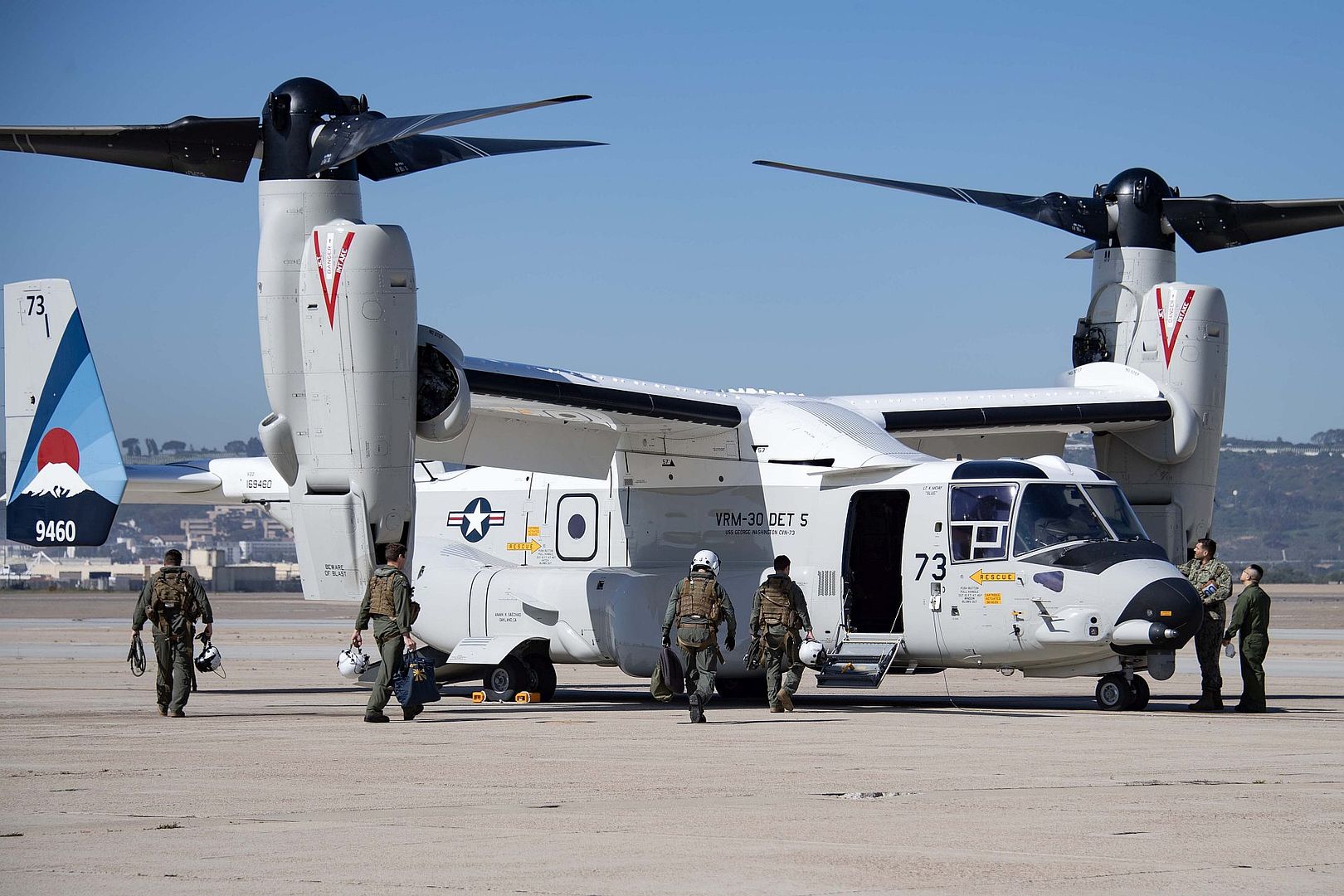
An F-15E Strike Eagle assigned to the 366th Fighter Wing, Mountain Home Air Force Base (AFB), Idaho, returns from a mission during Red Flag-Nellis 24-2, at Nellis AFB, Nevada, March 18, 2024. Red Flag provides unique training with an emphasis on Airman and Guardians’ readiness for high-end warfighting and strategic competition. (U.S. Air Force photo by William R. Lewis)_Idaho_returns_from_a_mission_during_Red_Flag-Nellis_24-2_at_Nellis_AFB_Nevada_March_18_2024..jpg?width=1920&height=1080&fit=bounds)
A U.S. Air Force F-16C Fighting Falcon, back, Royal Thai Air Force F-16A, center, and Republic of Singapore Air Force F-16C participate in the “Friendship through the sky” trilateral flyover over during Cope Tiger 2024 at Korat Royal Thai Air Force Base, Kingdom of Thailand, March 19, 2024. Cope Tiger 24 marks the 30th Anniversary of the exercise, originally designed to enhance combined multinational joint interoperability while concurrently aiming to enhance the strong defense relations among the three countries. (U.S. Air Force photo by Senior Airman Karla Parra)
U.S. Air Force Lt. Col. Eric Broyles, left, F-16 Fighting Falcon pilot, left, Gp.Capt. Arnon Charusombat, center, Royal Thai Air Force exercise director and Col. Sebastian Chai, Republic of Singapore director, standby to disembark from their aircraft after participating in the “Friendship through the sky” trilateral flyover during Cope Tiger 2024 at Korat Royal Thai Air Force Base, Kingdom of Thailand, March 19, 2024. Cope Tiger 24 marks the 30th Anniversary of the exercise, originally designed to enhance combined multinational joint interoperability while concurrently aiming to enhance the strong defense relations among the three countries. (U.S. Air Force photo by Senior Airman Karla Parra)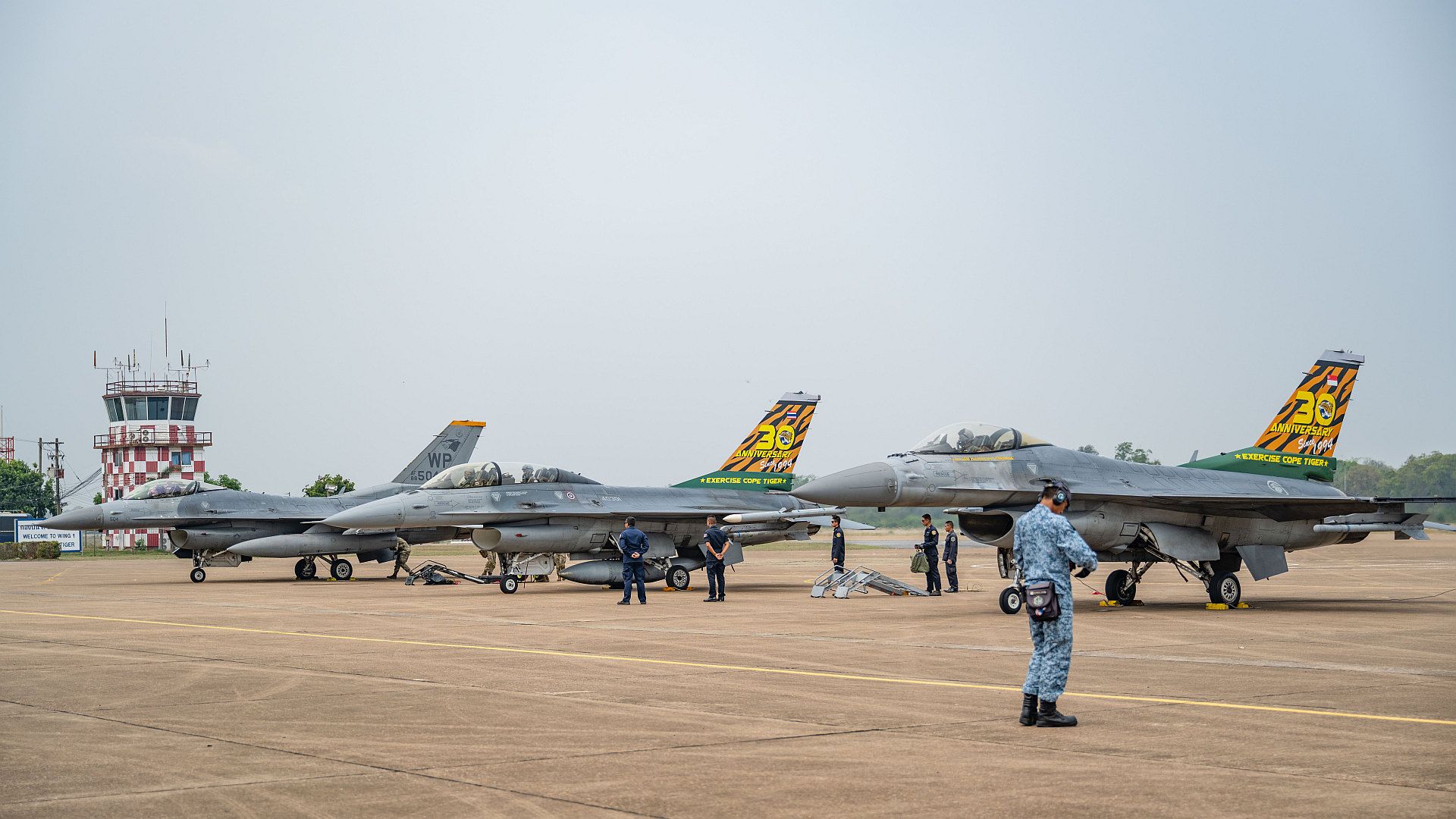
A remotely piloted MQ-9 Reaper from the 163rd Attack Wing sits in front of the 178th Wing hanger on Springfield-Beckley Air National Guard Base, Ohio, March 18, 2024. The aircraft is renowned for its broad capabilities in intelligence, surveillance, and reconnaissance missions. (U.S. Air National Guard photo by Staff Sgt. Jillian Maynus)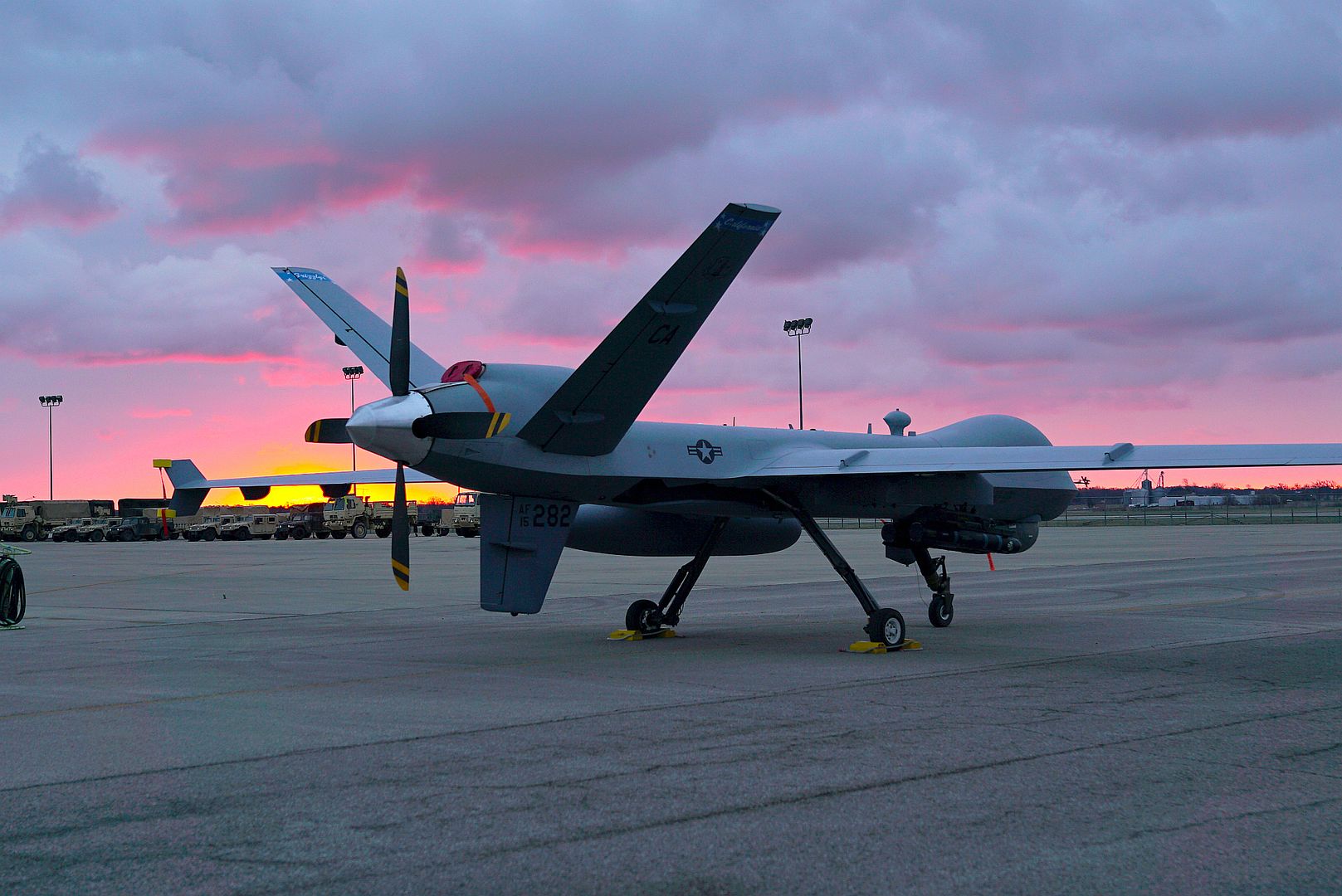
U.S. Marine Corps Maj. Michael Lowery, a training officer with Marine Fighter Attack Squadron (VMFA) 323, Marine Aircraft Group 11, 3rd Marine Aircraft Wing, left, and Capt. Michael Logrande, a student weapons systems officer with VMFA-323 prepare to taxi in an F/A-18D Hornet assigned to Marine VMFA-323 before a section engaged maneuvering flight at Marine Corps Air Station Miramar, California, March 18, 2024. This was the final training flight for Capt. Michael LoGrande, a student weapons systems officer with VMFA-323, before graduating on March 22, 2024, as the Marine Corps last WSO. (U.S. Marine Corps photos by Sgt. Sean Potter)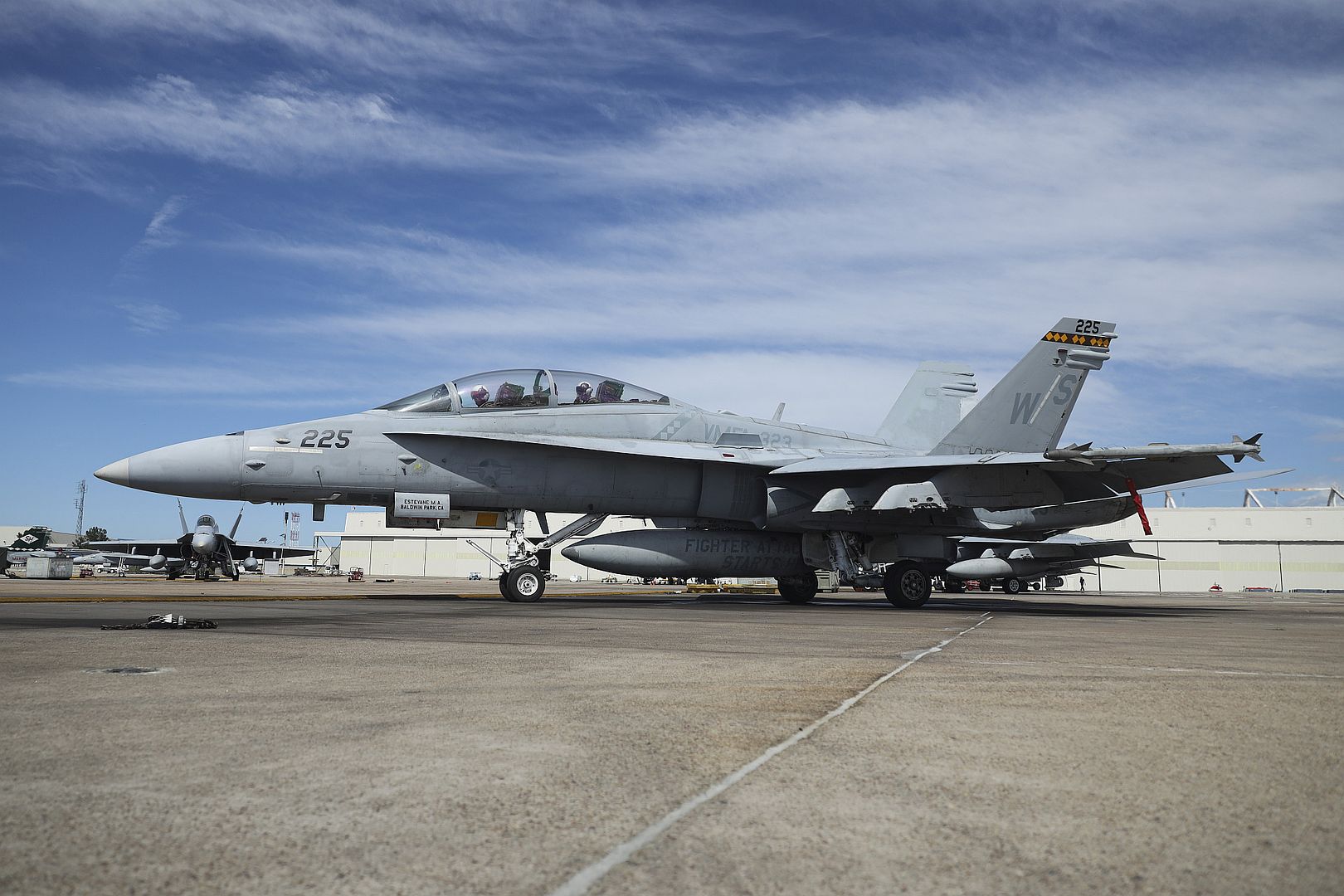
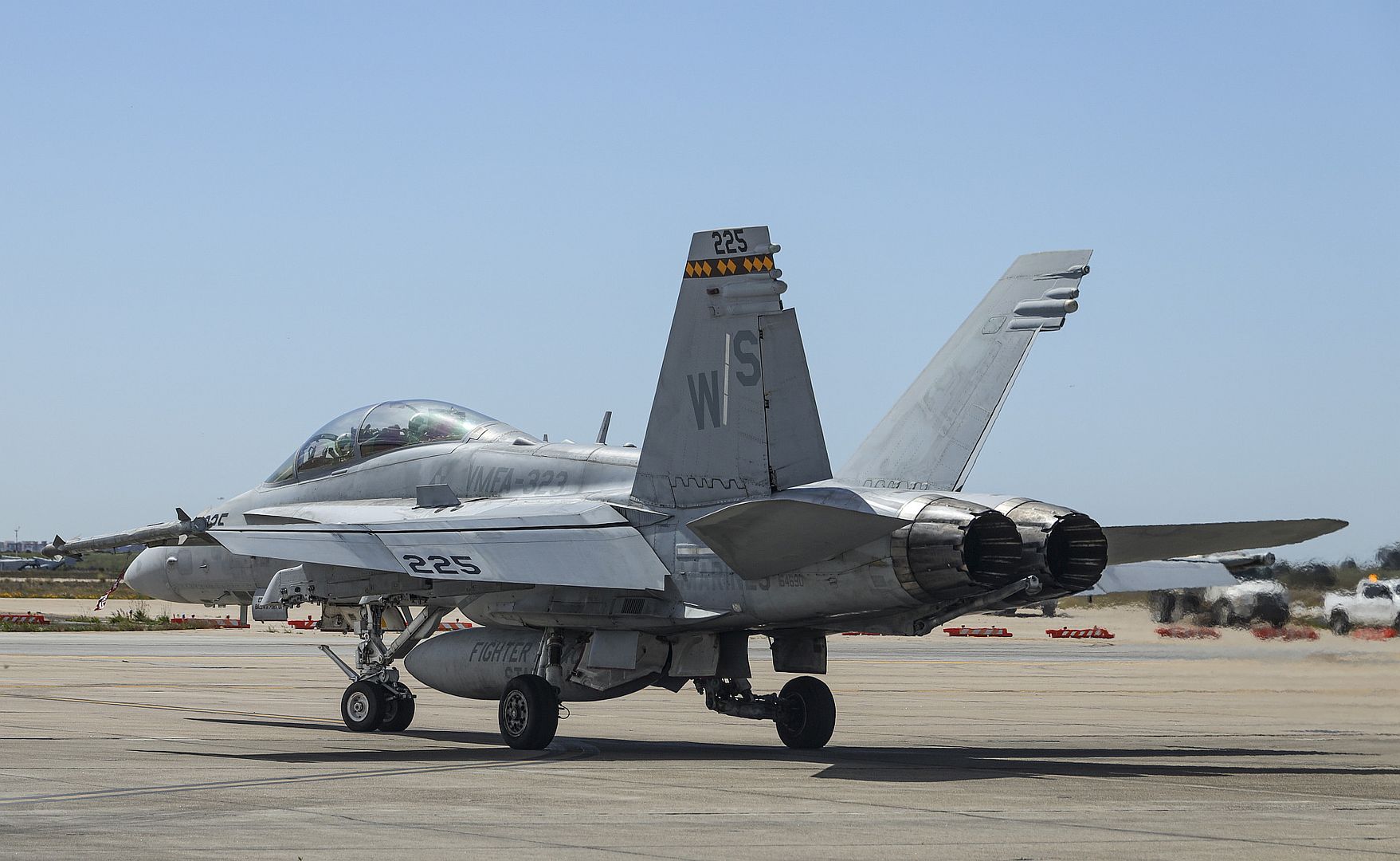
A U.S. Air Force F-16C Fighting Falcon assigned to the 55th Fighter Squadron “Shooters” takes off at Shaw Air Force Base, S.C., March 12, 2024, during a Naval Information Warfare Center (NIWC) Atlantic System of Systems Naval Integration Experiment exercise which took place at Joint Base Charleston, S.C., over a two-week period. This marked the first time U.S. Air Force fighter jets participated in the annual technology integration and experimentation event, led by NIWC Atlantic, the lead systems integrator for multiple U.S. Marine Corps edge-to-enterprise C4ISR technologies. (U.S. Air Force photo by Airman 1st Class Mariana Tafur)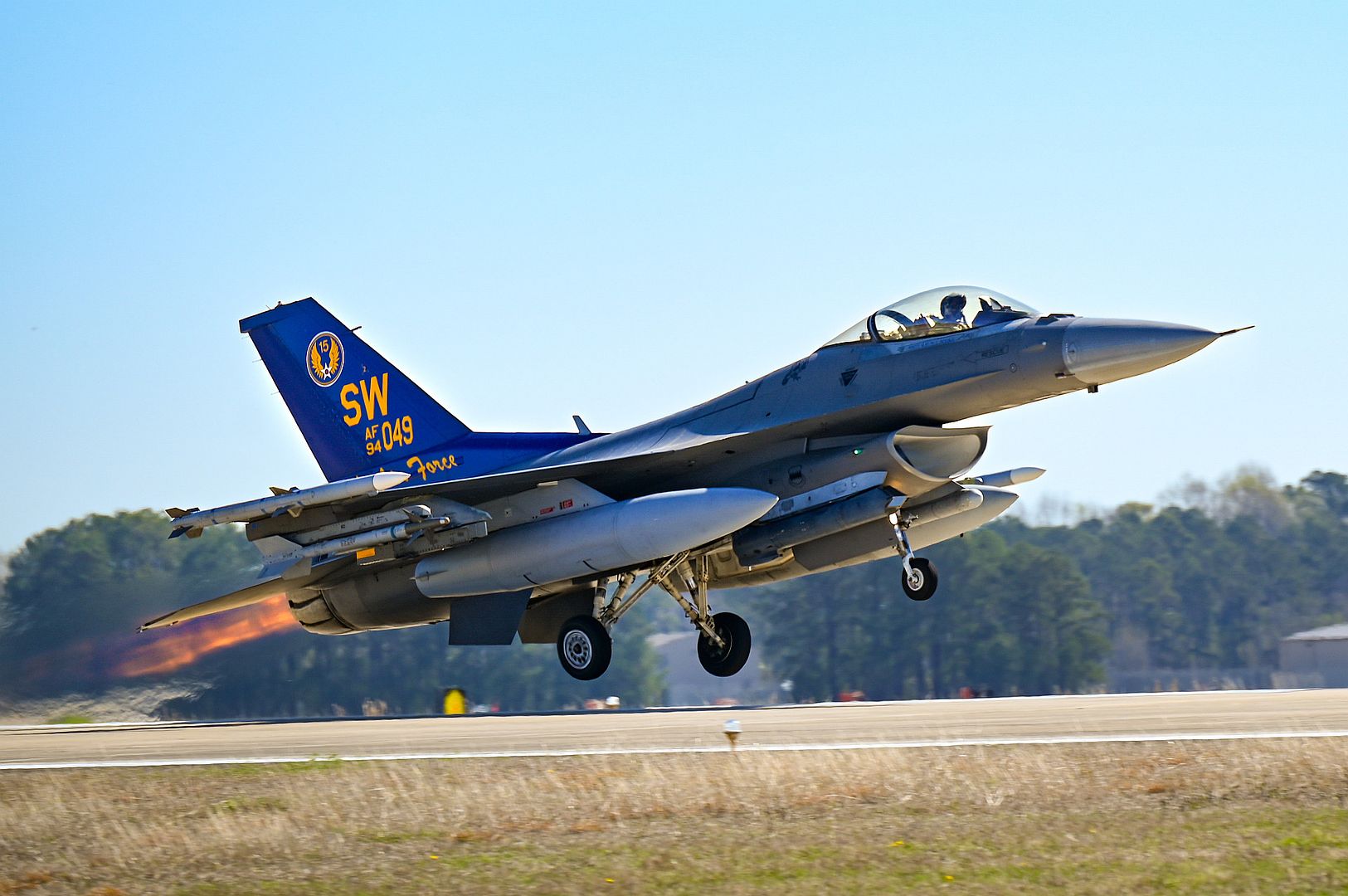
Aircraft sit on a ramp at Ramstein Air Base, Germany, as delegates gather to attend the 20th Ukrainian Defense Contact Group, March 19, 2024. Ministers of Defense and senior military officials from nearly 50 nations came together to discuss the ongoing crisis in Ukraine and ways to aid the country in its continued defense against Russia. (U.S. Air Force photo by Senior Airman Edgar Grimaldo)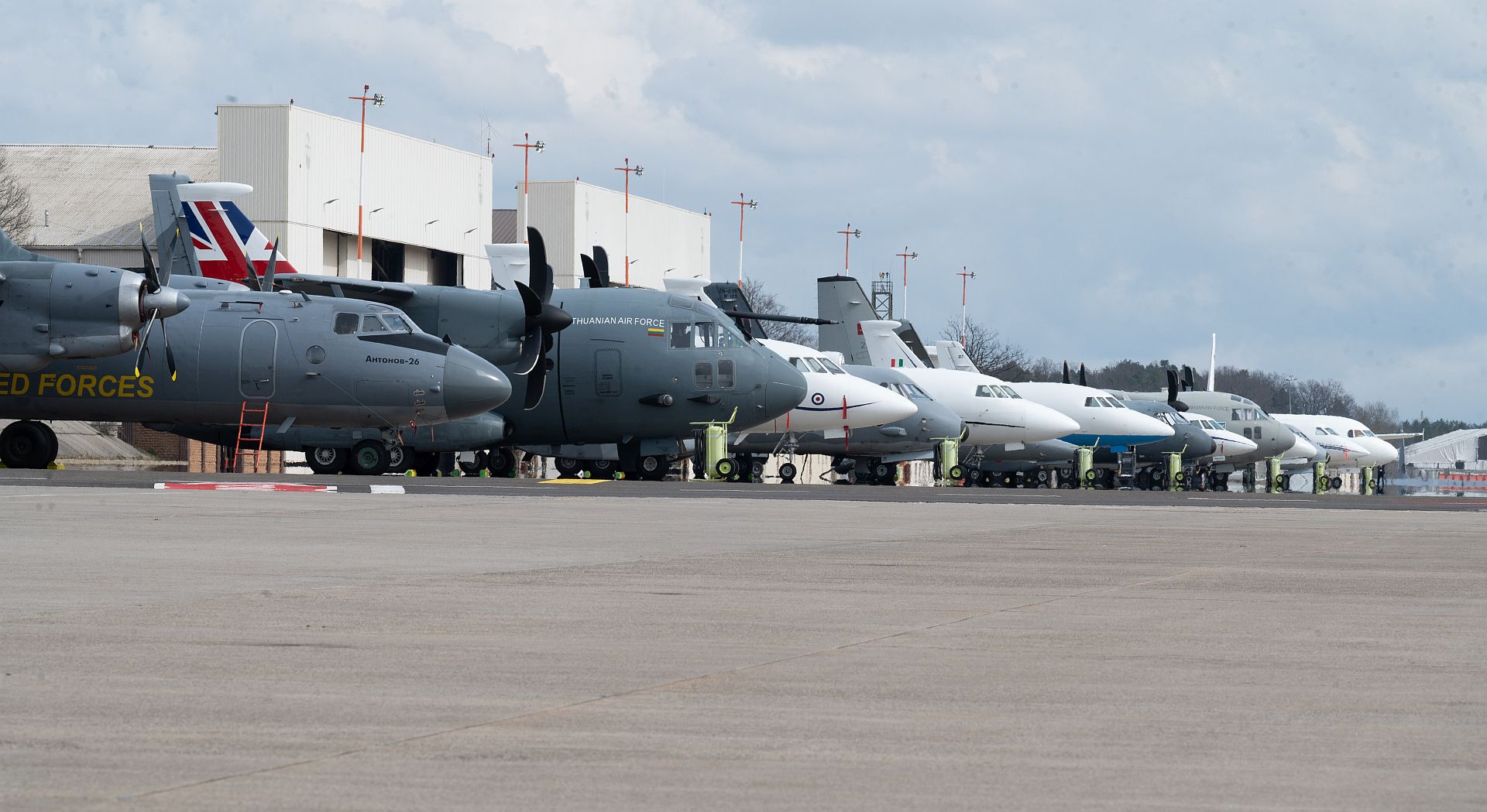
SAN DIEGO – 20 March 2024 – On Feb. 27, 2024, General Atomics Aeronautical Systems, Inc. (GA-ASI), in cooperation with the Naval Air Systems Command (NAVAIR), conducted a series of tests on GA-ASI’s Sonobuoy Dispensing System (SDS) using the MQ-9B SeaGuardian® Unmanned Aircraft System (UAS) on the U.S. Navy’s W-291 test range in southern California.
GA-ASI’s SeaGuardian flew the full test flight event configured with the SDS pod and SeaVue multi-role radar from Raytheon, an RTX business. During the test, the SDS pod dropped eight AN/SSQ-53 and two AN/SSQ-62 sonobuoys. Upon dispensing, the sonobuoys were successfully monitored by the SeaGuardian’s onboard Sonobuoy Monitoring and Control System (SMCS).
“This was a very successful demonstration of our SDS capability,” said GA-ASI President David R. Alexander. “The demonstration helped us prove out the SDS, which is an important component for our Anti-Submarine Warfare capability.”
The SeaGuardian was flown under a NAVAIR Interim Flight Clearance. The SDS pod is fitted with an advanced pneumatic ejection system developed, designed, and manufactured by AEREA in Italy. AEREA also supplies the internal structure assembly.
MQ-9B SeaGuardian is a medium-altitude, long-endurance RPA system. Its multi-domain capabilities allow it to flex from mission to mission. SeaGuardian has been used by the U.S. in several recent demonstrations, including Northern Edge, Integrated Battle Problem and Group Sail. The aircraft is currently being operated by the Japan Coast Guard (JCG) and the Japan Maritime Self-Defense Force (JMSDF).
About GA-ASI
General Atomics Aeronautical Systems, Inc. (GA-ASI), an affiliate of General Atomics, is a leading designer and manufacturer of proven, reliable RPA systems, radars, and electro-optic and related mission systems, including the Predator® RPA series and the Lynx® Multi-mode Radar. With more than eight million flight hours, GA-ASI provides long-endurance, mission-capable aircraft with integrated sensor and data link systems required to deliver persistent situational awareness. The company also produces a variety of sensor control/image analysis software, offers pilot training and support services, and develops meta-material antennas. For more information, visit www.ga-asi.com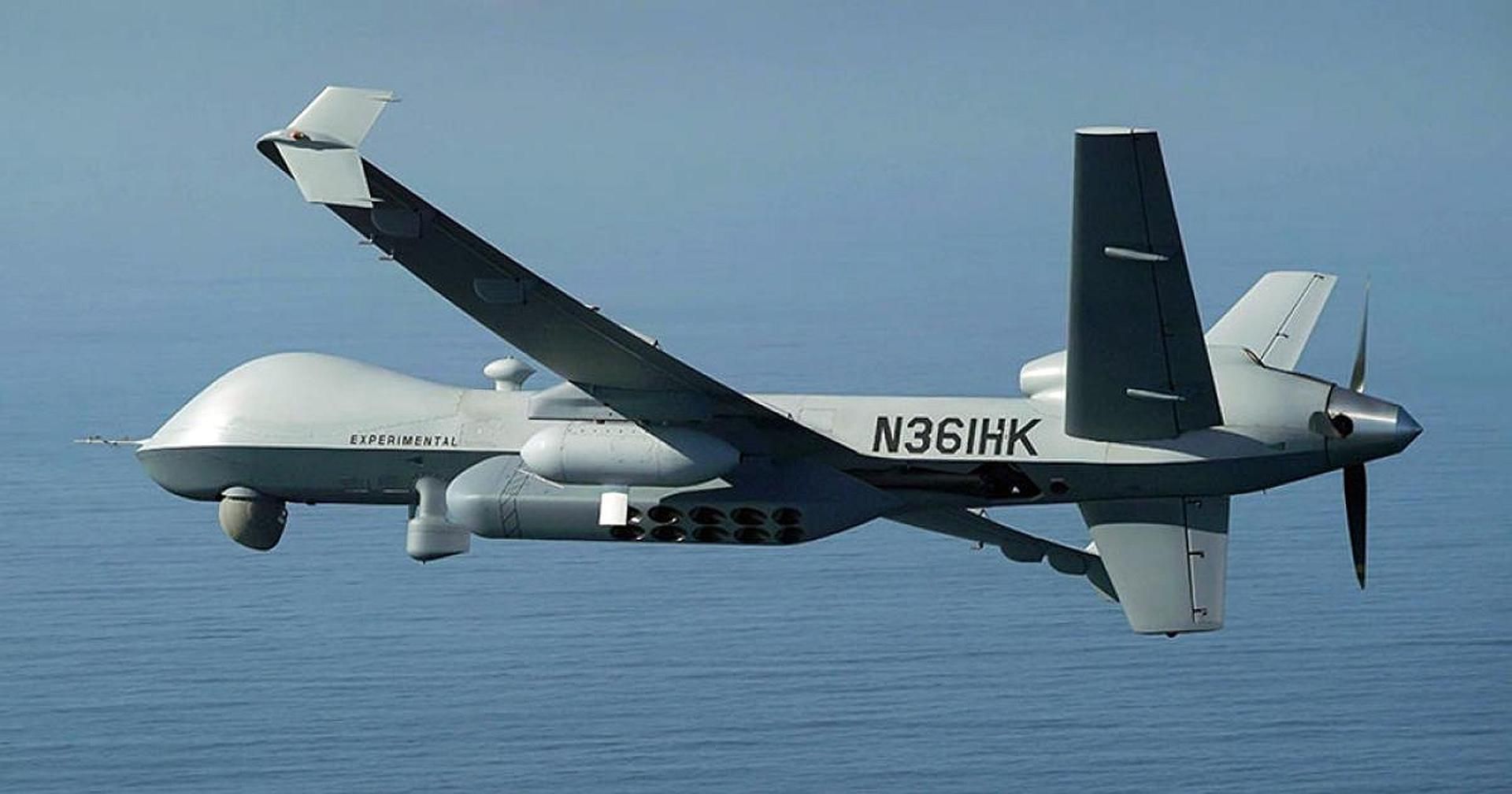
A fast and furious return for the 617 Squadron F-35B Lightnings, completing phase one of Exercise Steadfast Defender as part of the UK's NATO contribution. ⚡
The Dambusters disembarked HMS Prince of Wales to return to RAF Marham, with the remaining Squadron and supporting personnel due to return home shortly.
(Photo courtesy of the RAF)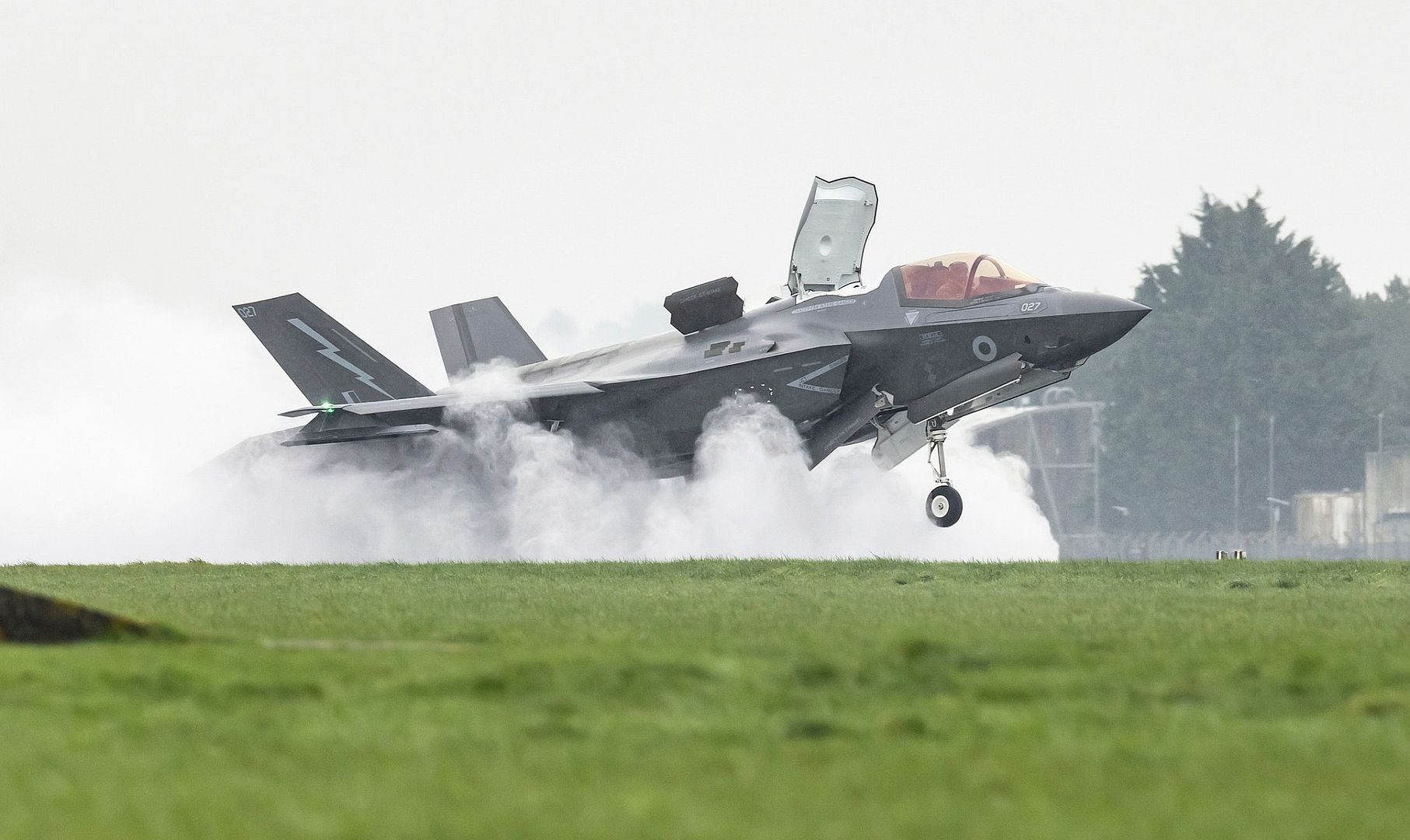
Exercise VOLFA 2024 continues! Between complex air raids, crisis scenario allowing combat trainings on the entire French national territory.
(Photos courtesy of the Armée de l'Air et de l'Espace )
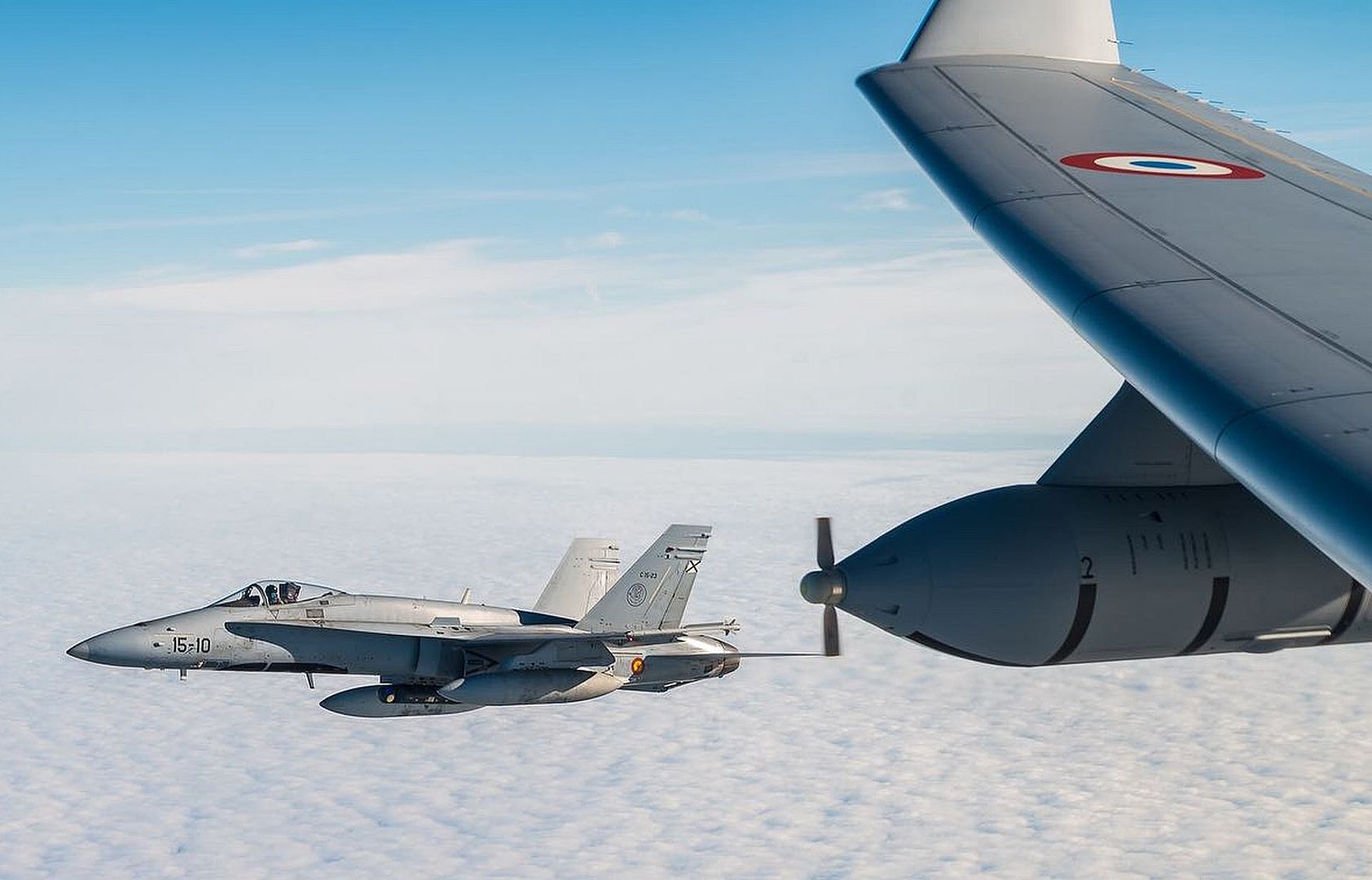
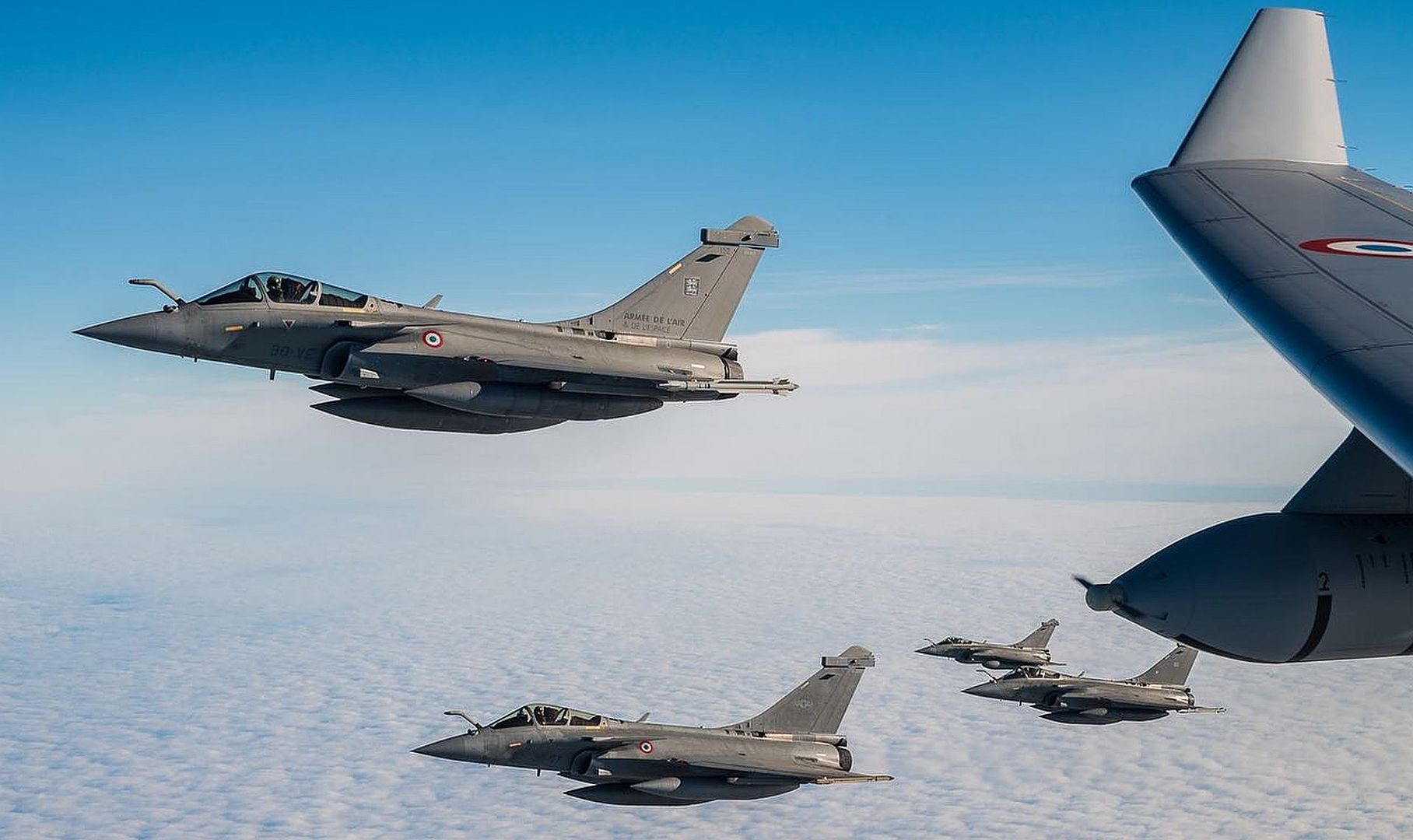

-
 Main AdminU.S. Air Force Capt. Melanie "MACH" Kluesner, the F-35A Lightning II Demonstration Team pilot and commander, flies a demonstration at Hill Air Force Base, Utah, March 19, 2024. The F-35A is an agile, versatile, high-performance, 9g capable multirole fighter that combines stealth, sensor fusion and unprecedented situational awareness. (U.S. Air Force photos by Senior Airman Zachary Rufus)
Main AdminU.S. Air Force Capt. Melanie "MACH" Kluesner, the F-35A Lightning II Demonstration Team pilot and commander, flies a demonstration at Hill Air Force Base, Utah, March 19, 2024. The F-35A is an agile, versatile, high-performance, 9g capable multirole fighter that combines stealth, sensor fusion and unprecedented situational awareness. (U.S. Air Force photos by Senior Airman Zachary Rufus)

An F-35A Lightning II with the 115th Fighter Wing approaches a KC-135 Stratotanker from the 121st Air Refueling Wing to be refueled over the skies of Wisconsin, March 20, 2024. The KC-135 Stratotanker is a unique asset that enhances the Air Force's capability to accomplish its primary mission of global reach through aerial refueling. (U.S. Air National Guard photo by Senior Airman Ivy Thomas)
This month, three Rafale were deployed to Fetesti airbase ????????, Romania, as part of the concept of reactive air weapon implementation (MORANE).
This operational concept aims to test the reactivity and agility of the plan with a reduced logistics base by relying on a network of interoperable partner air bases. The Rafale thus participated in CAS (Close Air Support) type training missions with the Romanian Air Forces as well as NATO member countries.
Implemented regularly, this deployment contributes to strengthening the defensive and deterrent posture on the East Flank and allows to illustrate the commitment of the French armies to regional security.
(Photos courtesy of the Armée de l'Air et de l'Espace)
-
 Main AdminA member of the 3rd Wing and 90th Fighter Generation Squadron prepares to take part in a missing man formation flyover in remembrance of Staff Sgt. Charles A. Crumlett at Joint Base Elmendorf-Richardson, Alaska, March 22, 2024. The missing man formation is a military tradition which dates back to World War II and is one of the highest forms of paying respects to fallen service members. (U.S. Air Force photo by Senior Airman Julia Lebens)
Main AdminA member of the 3rd Wing and 90th Fighter Generation Squadron prepares to take part in a missing man formation flyover in remembrance of Staff Sgt. Charles A. Crumlett at Joint Base Elmendorf-Richardson, Alaska, March 22, 2024. The missing man formation is a military tradition which dates back to World War II and is one of the highest forms of paying respects to fallen service members. (U.S. Air Force photo by Senior Airman Julia Lebens)
The Acemaker III, showcasing a T-33 Shooting Star, performs during Luke Days 2024, March 23, 2024, at Luke Air Force Base, Arizona. The demonstration highlighted the agility and performance of early jet aircraft. (U.S. Air Force photo by Staff Sgt. Noah D. Coger)
A U.S. Air Force F-16C Fighting Falcon assigned to the 64th Aggressors takes off in support of a mission during Red Flag-Nellis 24-2 at Nellis AFB, Nevada, March 19, 2024. Red Flag provides participants the opportunity to plan and employ together in the air, domain (supported by space, and cyber) in a contested, degraded and operationally limited environment. (U.S. Air Force photo by Senior Airman Jordan McCoy)
A U.S. Navy EA-18G Growler takes off in support of a mission during Red Flag-Nellis 24-2 at Nellis Air Force Base, Nevada, March 19, 2024. Exercise participants conducted various scenarios, including defensive counterair, offensive counterair suppression of enemy air defenses, and offensive counterair interdiction. (U.S. Air Force photo by Senior Airman Jordan McCoy)
A U.S. Air Force F-16C Fighting Falcon assigned to the 64th Aggressors takes off in support of a mission during Red Flag-Nellis 24-2 at Nellis AFB, Nevada, March 19, 2024. Red Flag-Nellis 24-2 provided participants realistic joint training in a highly contested environment. (U.S. Air Force photo by Senior Airman Jordan McCoy)
A B-52 Stratofortress assigned to the 2nd Bomb Wing at Barksdale Air Force Base, Louisiana, arrives at Navy Support Facility, Diego Garcia in support of a Bomber Task Force mission, March 22, 2024. The U.S. routinely and visibly demonstrates commitment to our allies and partners through the global employment of our military forces. (U.S. Air Force photo by Master Sgt. Staci Kasischke)
Two B-52 Stratofortresses assigned to the 2nd Bomb Wing at Barksdale Air Force Base, Louisiana arrive at Navy Support Facility, Diego Garcia in support of a Bomber Task Force mission, March 22, 2024. The U.S. routinely and visibly demonstrates commitment to our allies and partners through the global employment of our military forces. (U.S. Air Force photo by Master Sgt. Staci Kasischke)
MOJAVE, CA and DENVER, March 22, 2024 — Boom Supersonic, the company building the world’s fastest airliner, Overture, today announced the successful flight of XB-1, the world’s first independently developed supersonic jet, at the Mojave Air & Space Port in Mojave, California. Like Overture, XB-1 leverages state-of-the-art technologies to enable efficient supersonic flight including carbon fiber composites, advanced avionics, digitally-optimized aerodynamics, and an advanced supersonic propulsion system.
“Today, XB-1 took flight in the same hallowed airspace where the Bell X-1 first broke the sound barrier in 1947,” said Blake Scholl, founder and CEO of Boom Supersonic. “I’ve been looking forward to this flight since founding Boom in 2014, and it marks the most significant milestone yet on our path to bring supersonic travel to passengers worldwide.”
XB-1 was flown by Boom Chief Test Pilot Bill “Doc” Shoemaker, and Test Pilot Tristan “Geppetto” Brandenburg flew the T-38 chase aircraft which monitored the flight. XB-1 took off from the Mojave Air & Space Port and flew in the same airspace that hosted many historic first flights, including the flights of the Bell X-1, the North American X-15, and the Lockheed SR-71 Blackbird. XB-1 met all of its test objectives, including safely and successfully achieving an altitude of 7,120 feet and speeds up to 238 knots (273 mph).
“Everyone on the XB-1 team should be incredibly proud of this achievement,” said Bill “Doc” Shoemaker, Chief Test Pilot for Boom Supersonic. “It has been a privilege to share this journey with so many dedicated and talented professionals. The experience we have gained in reaching this milestone will be invaluable to Boom’s revival of supersonic travel.”
Two decades after Concorde’s retirement, the first flight of XB-1 marks the return of a civil supersonic aircraft to the skies and paves the way for the revival of mainstream supersonic travel. The XB-1 program provides the foundation for the design and development of Overture, while establishing a safety-first culture in engineering and manufacturing. XB-1 validates key technologies and innovations, including:
Augmented reality vision system: Two nose-mounted cameras, digitally augmented with attitude and flight path indications, feed a high resolution pilot display enabling excellent runway visibility. This system enables improved aerodynamic efficiency without the weight and complexity of a movable nose.
Digitally-optimized aerodynamics: Engineers used computational fluid dynamics simulations to explore thousands of designs for XB-1. The result is an optimized design that combines safe and stable operation at takeoff and landing with efficiency at supersonic speeds.
Carbon fiber composites: XB-1 is almost entirely made from carbon fiber composite materials, enabling it to realize a sophisticated aerodynamic design in a strong, lightweight structure.
Supersonic intakes: XB-1’s engine intakes slow supersonic air to subsonic speeds, efficiently converting kinetic energy into pressure energy, allowing conventional jet engines to power XB-1 from takeoff through supersonic flight.
The inaugural flight of the XB-1 demonstrator takes place as Overture continues to advance toward production, with a growing global network of Tier 1 suppliers and an order book including 130 orders and pre-orders from American Airlines, United Airlines, and Japan Airlines. Overture will carry 64-80 passengers at Mach 1.7, about twice the speed of today’s subsonic airliners. Optimized for speed, safety, and sustainability, Overture is designed to run on up to 100% sustainable aviation fuel (SAF)
March 25, 2024
Bombardier today celebrated more impressive speed records on the Global 7500 aircraft, bringing the total to more than 30 and counting. The most recent records, including travelling from Farnborough to Muharraq and Phoenix to Paris, mark the latest accomplishment for the Global 7500 business jet, the undisputed leader in the ultra-long-range class – the most luxurious, reliable and productive business jet in the skies today.
These records – pending approval by the FAI, the World Air Sport Federation – build on earlier speed and distance records already bestowed on this truly remarkable business jet, including an 8,225 nautical mile flight in October 2019 from Sydney, Australia to Detroit, Michigan – the longest-range flight ever in business aviation. The Global 7500 also set more than 20 new flight records (1) in the fall of 2023, including routes from Singapore to Anchorage, Alaska and Montreal to Geneva.
“The Global 7500 aircraft is in a class by itself when it comes to performance – an immaculate business jet that was made to set and shatter records,” said Jean-Christophe Gallagher, Executive Vice President, Aircraft Sales and Bombardier Defense. “With its impeccable design attributes and technological advancements, the Global 7500 aircraft offers customers precisely what they need to enhance their operations – unmatched reliability, productivity and style.”
With a top speed of Mach 0.925 and an industry leading range of 7,700 nautical miles (14,260 km), the Global 7500 aircraft features outstanding performance capabilities. Its Smooth Flĕx Wing is designed with a sophisticated slats and flap system that generates exceptional lift on takeoff and approach, maximizing aerodynamic efficiency and boosting performance while improving safety and offering a smoother, more restful ride. It also reduces fuel burn and lowers emissions and produces excellent short-field and high-speed performance.
The industry-defining Global 7500 jet is equally impressive when it comes to cabin design. With its stunning, spacious interior featuring four true living spaces, a full-size, superbly equipped kitchen and a dedicated crew suite, it offers customers the ultimate in-flight experience. Other innovative design elements set the benchmark for the most exceptional cabin interior in business aviation, including Bombardier’s patented Nuage seat, which features the industry’s first zero-gravity position. In short, the aircraft is the ultimate home in the sky, a reliable, productive business tool with its ultra-fast internet capabilities and impeccably designed cabins.
Bombardier is also very pleased to share that the incredible attributes of the Global 7500 aircraft will be enhanced even more with the introduction of the Global 8000 (2) aircraft, announced in 2022. Bombardier’s flagship of a new era will boast an industry-leading range of 8,000 nautical miles and an unbeatable top speed of Mach 0.94, making it the ultimate all-in-one business aircraft. The discerning Global 8000 business jet also features the healthiest cabin in the industry, with Bombardier’s Pũr Air and advanced HEPA filter technology for the cleanest cabin air and the fastest fresh air replacement. It also features the lowest cabin altitude of 2,900 feet when flying at 41,000 ft. – lower than any business jet today.
Bombardier’s Global 8000 aircraft development is ongoing and the program is progressing to plan. Additionally, for current Global 7500 operators, the incredible performance enhancements on the Global 8000 will be retrofittable when the aircraft enters into service, currently expected in 2025 (3) , making it a future-proof investment and the flagship for today and tomorrow
The Global 7500 flight record from Farnborough to Muharraq was set by charter company Catreus. The Global 7500 record from Phoenix to Paris was set by charter firm Phenix Jet Cayman. These remarkable accomplishments further affirm the proven attributes of this amazing aircraft – one that has thoroughly transformed business aviation with its refined design, unsurpassed performance and outstanding technological advancements.
Singapore (March 25, 2024) – Bell Textron Inc., a Textron Inc. (NYSE:TXT) company, announced the delivery of Indonesia’s first Designer Series Bell 429 helicopter to SOTA Holdings Pte Ltd.
Following the successful delivery, PT National Utility Helicopters (NUH), one of Indonesia’s largest helicopter operators and management companies, will manage and operate the Bell 429 for a Jakarta-based agribusiness operating in East Kalimantan.
“At Bell, we take great pride in delivering aircraft that meet or exceed our customers’ unique tastes and requirements. The seamless customization of the Bell 429 for SOTA Holdings Pte Ltd, is the first helicopter from our Designer Series lineup which shall be used in Indonesia, epitomizes our commitment to meeting those needs,” said Sameer Rehman, managing director, Asia Pacific, Bell.
“The Bell 429 continues to be the light twin helicopter of choice in the corporate and government segments across the region as operators recognize its multi-mission capabilities, along with Bell’s strong aftermarket service and support that enable operators to keep their 429s flying more and for longer.”
With superior leathers, improved upholstery and hardwood flooring, Bell's Designer Series takes the cabin experience of the Bell 429 to a new level of luxury. Metal finishing, accented by the leather details, complement the refreshed color schemes, helping to tie in every detail of the aircraft’s interior.
The Bell 429 has proven to be a popular choice for customers operating in the corporate, HEMS and law enforcement segments because it offers a smooth and comfortable ride as well as unrivalled cabin space – it has the largest cabin in the light twin helicopter market. There are currently more than 450 Bell 429s operating worldwide, clocking over 602,000 global flight hours.
Over the past year, Bell delivered five Bell 429 helicopters to customers across Asia Pacific in corporate and law enforcement segments.
Post a reply
- Go to Next topic
- Go to Welcome
- Go to Introduce Yourself
- Go to General Discussion
- Go to Screenshots, Images and Videos
- Go to Off topic
- Go to Works in Progress
- Go to Skinning Tips / Tutorials
- Go to Skin Requests
- Go to IJAAF Library
- Go to Luftwaffe Library
- Go to RAF Library
- Go to USAAF / USN Library
- Go to Misc Library
- Go to The Ops Room
- Go to Made in Germany
- Go to Campaigns and Missions
- Go to Works in Progress
- Go to Juri's Air-Raid Shelter
- Go to Campaigns and Missions
- Go to Works in Progress
- Go to Skinpacks
- Go to External Projects Discussion
- Go to Books & Resources
